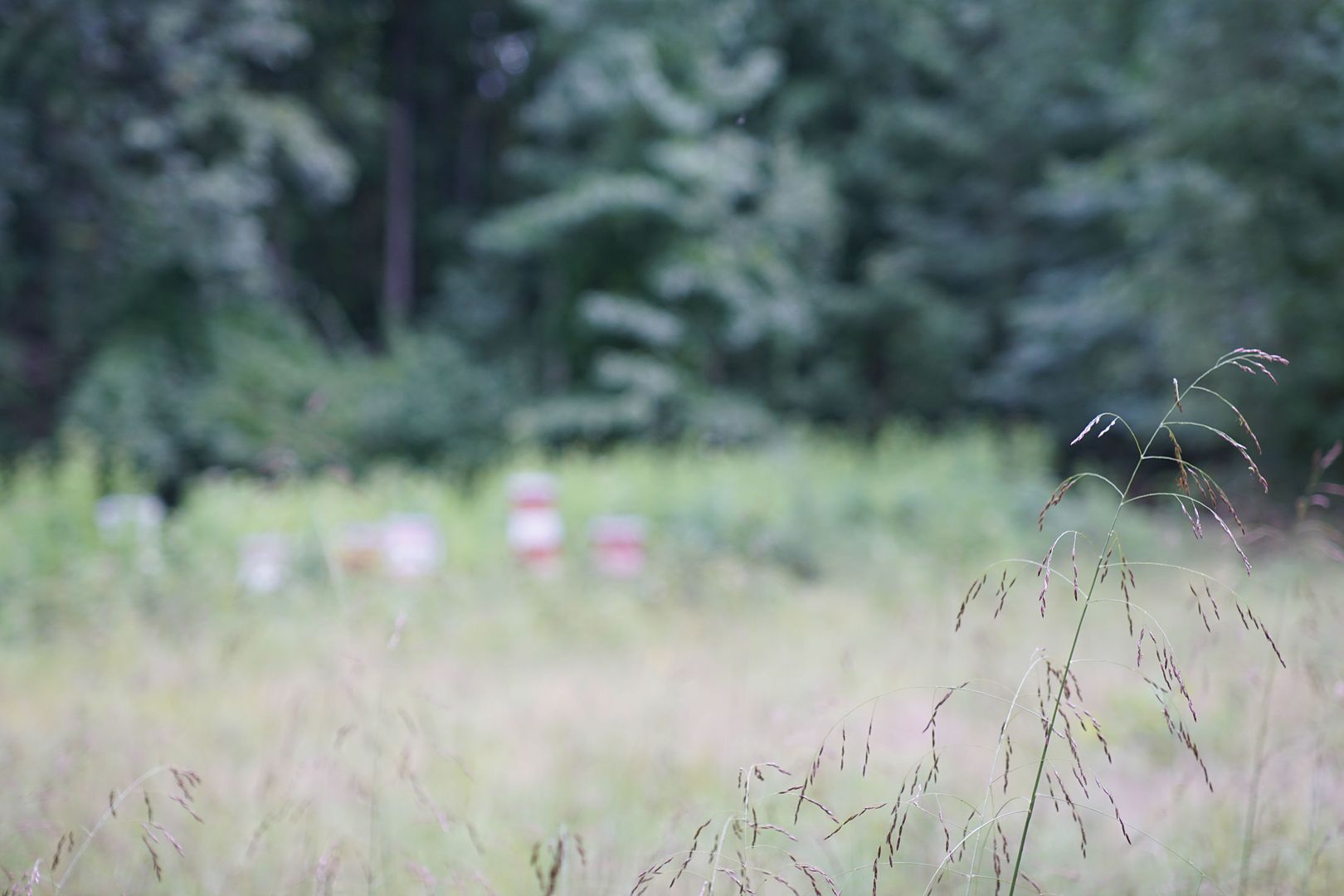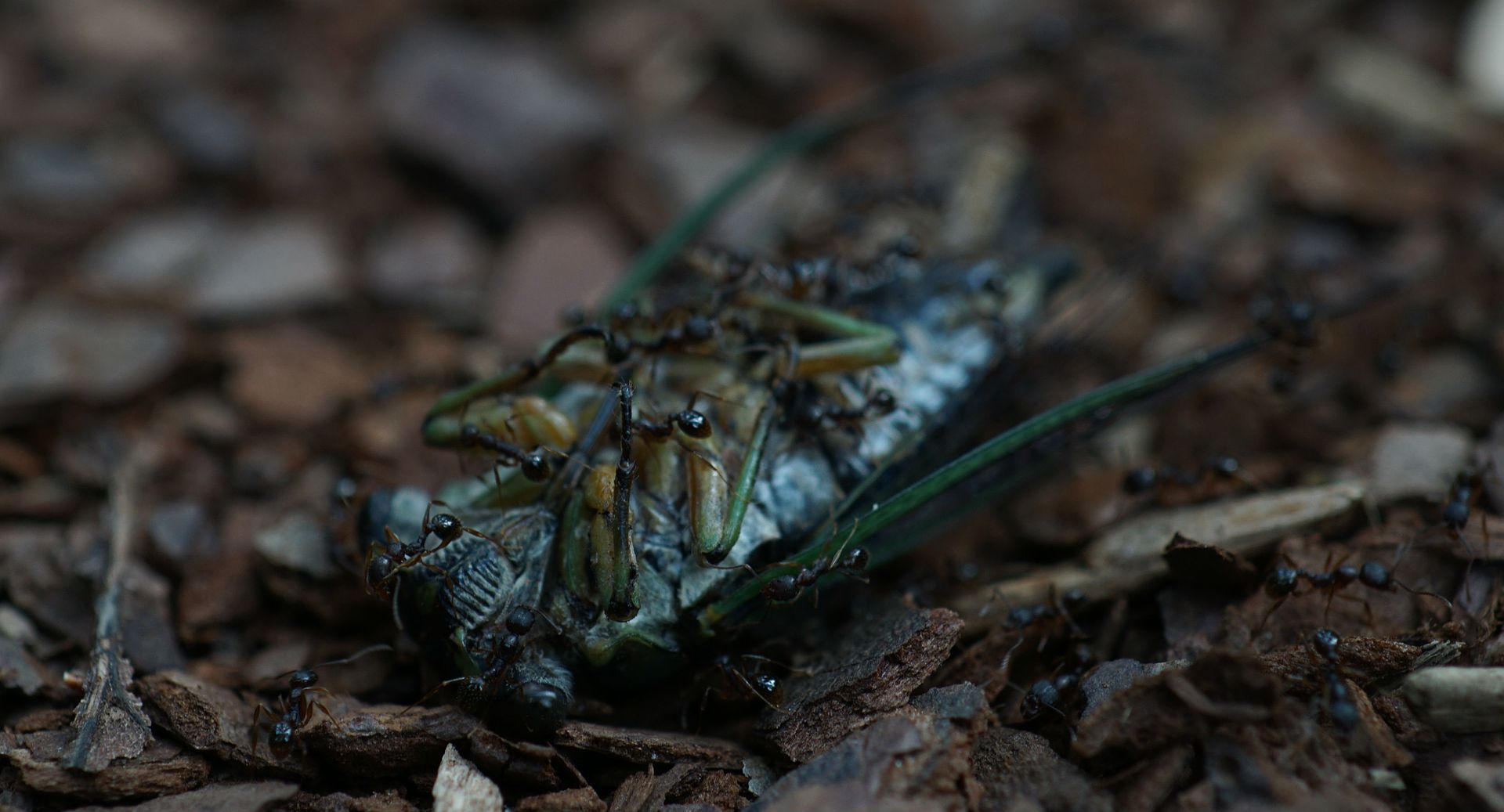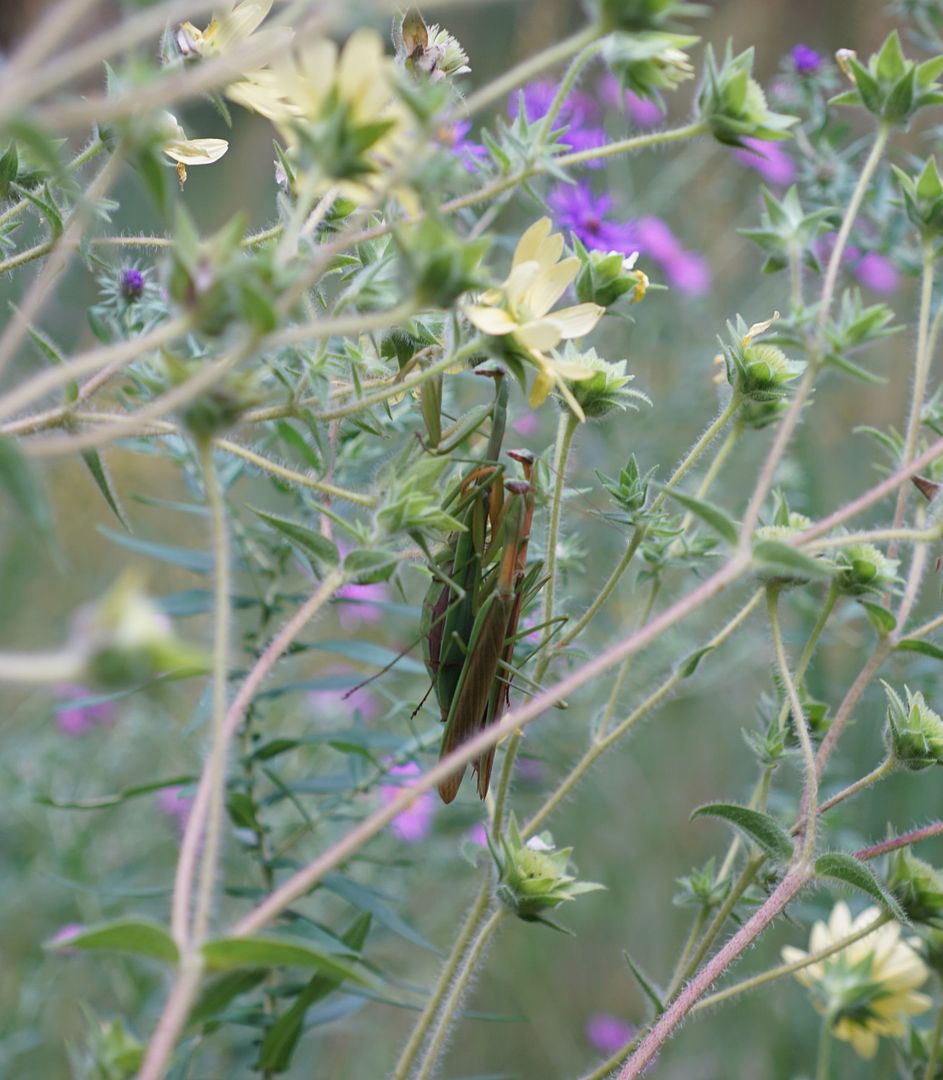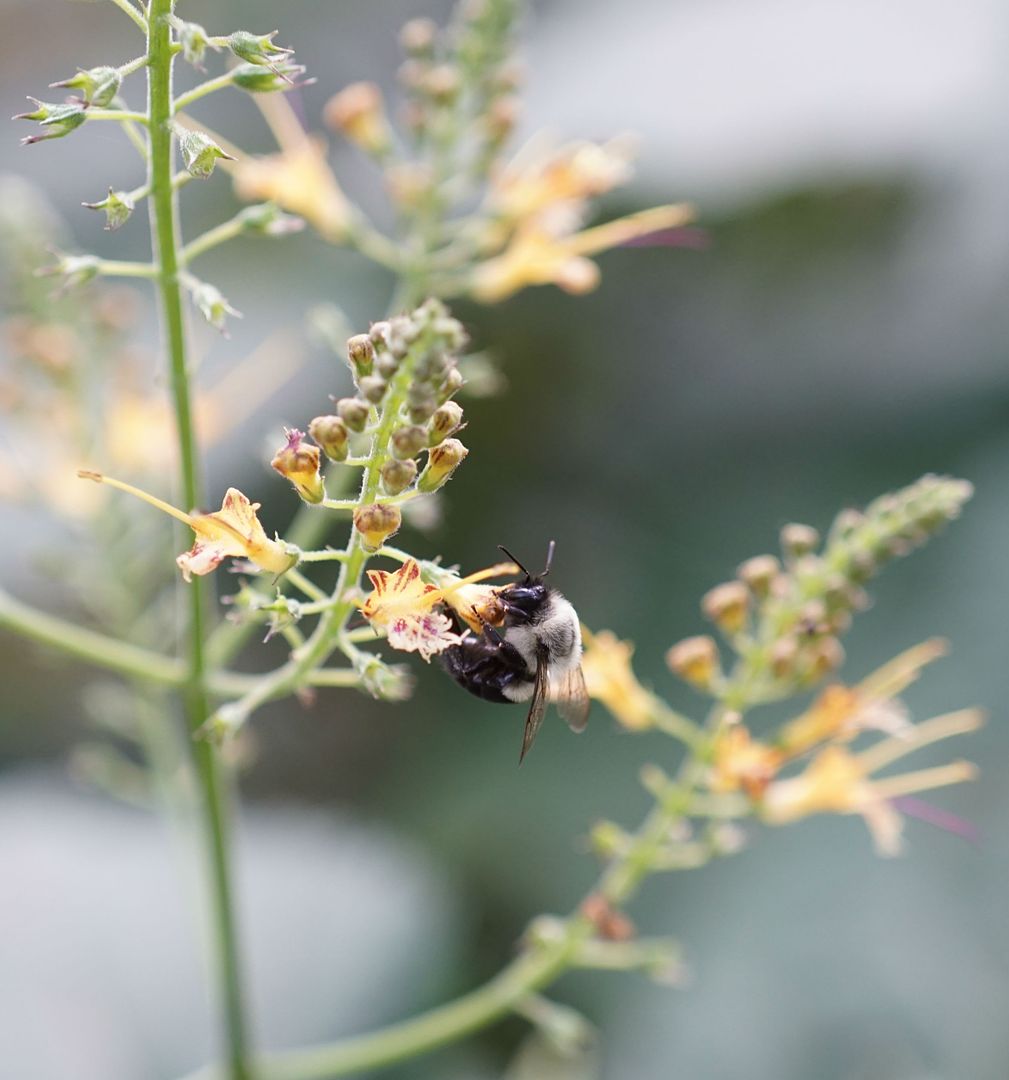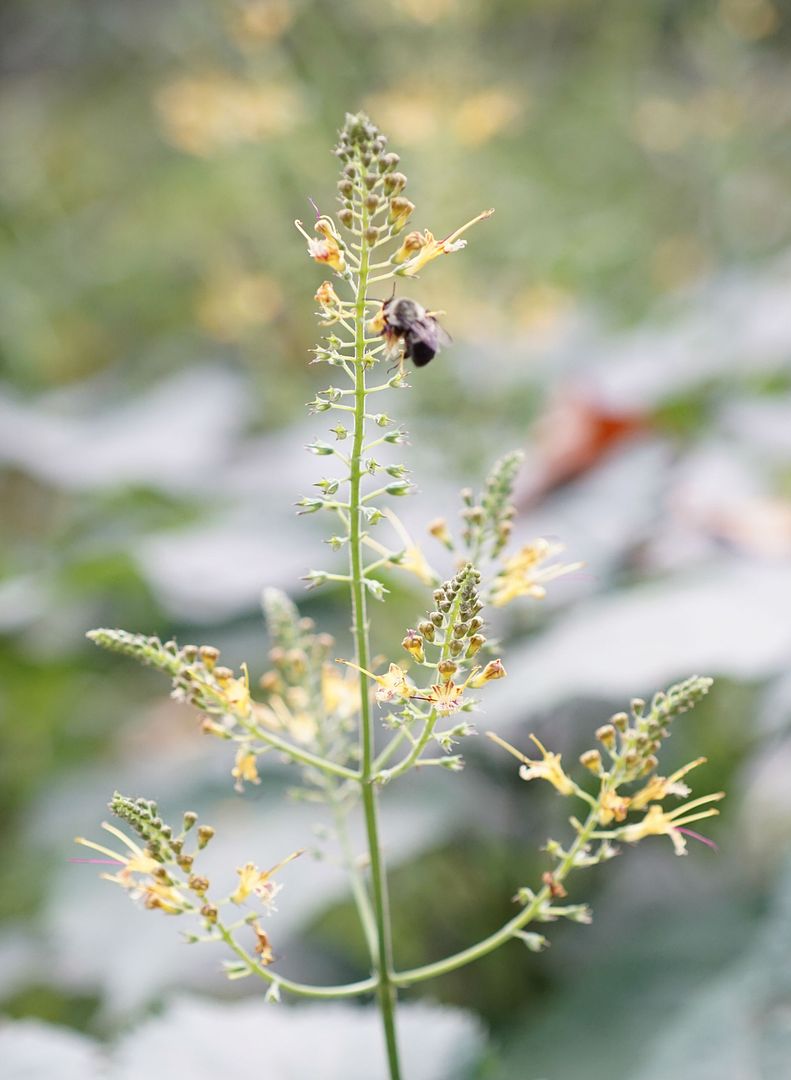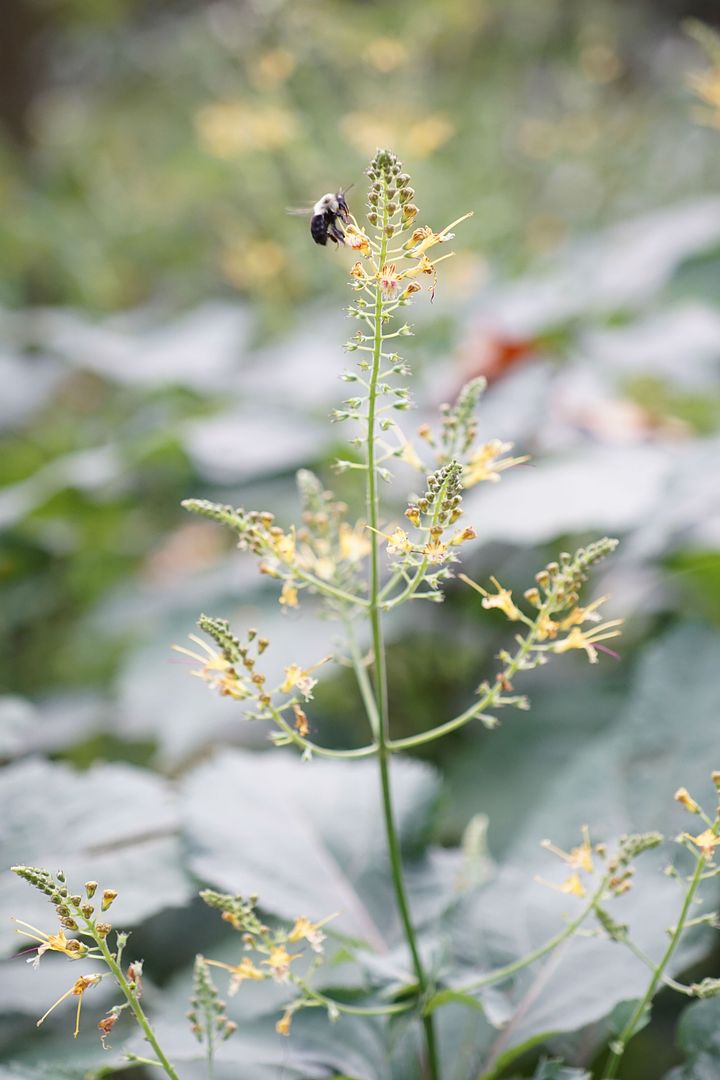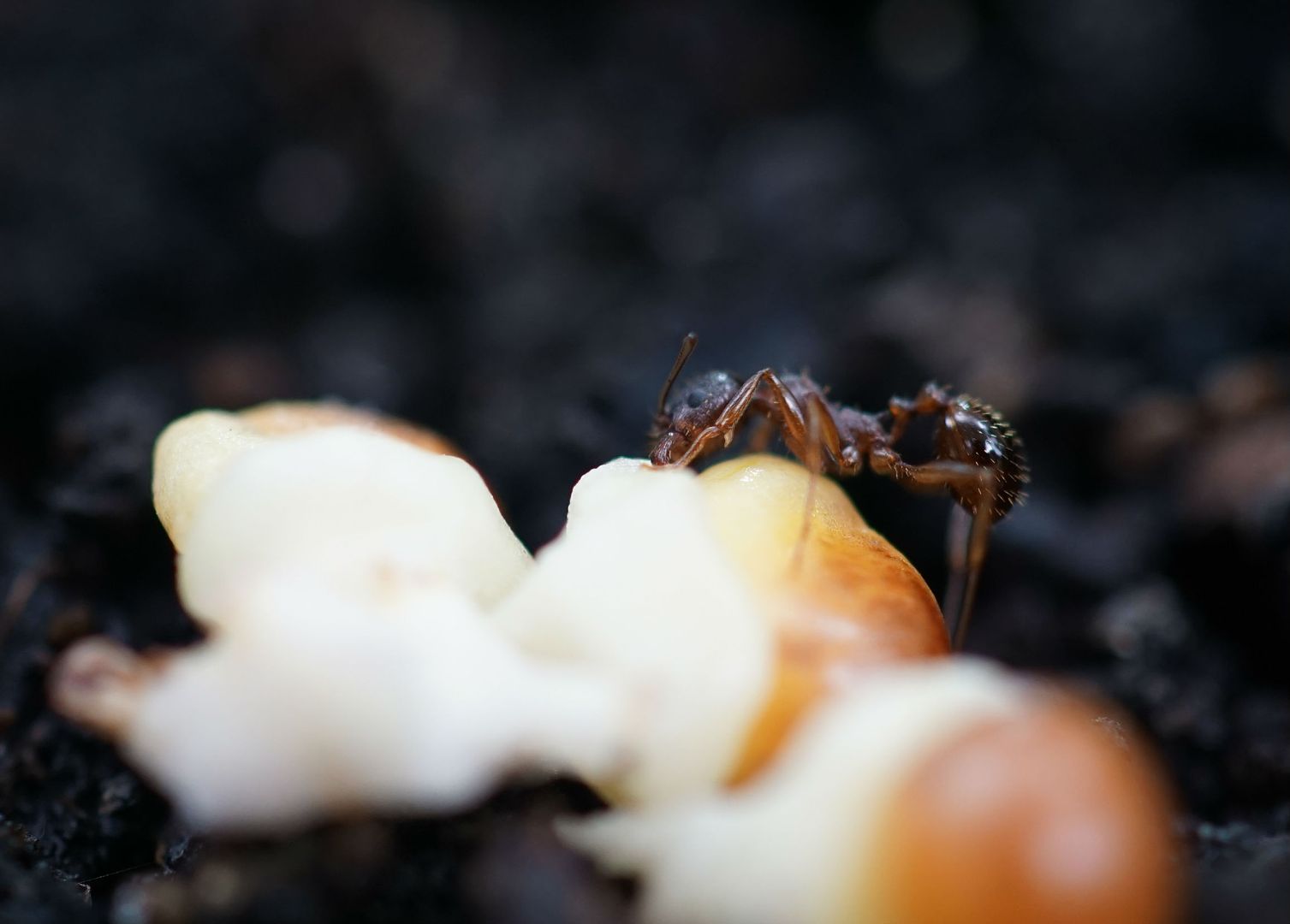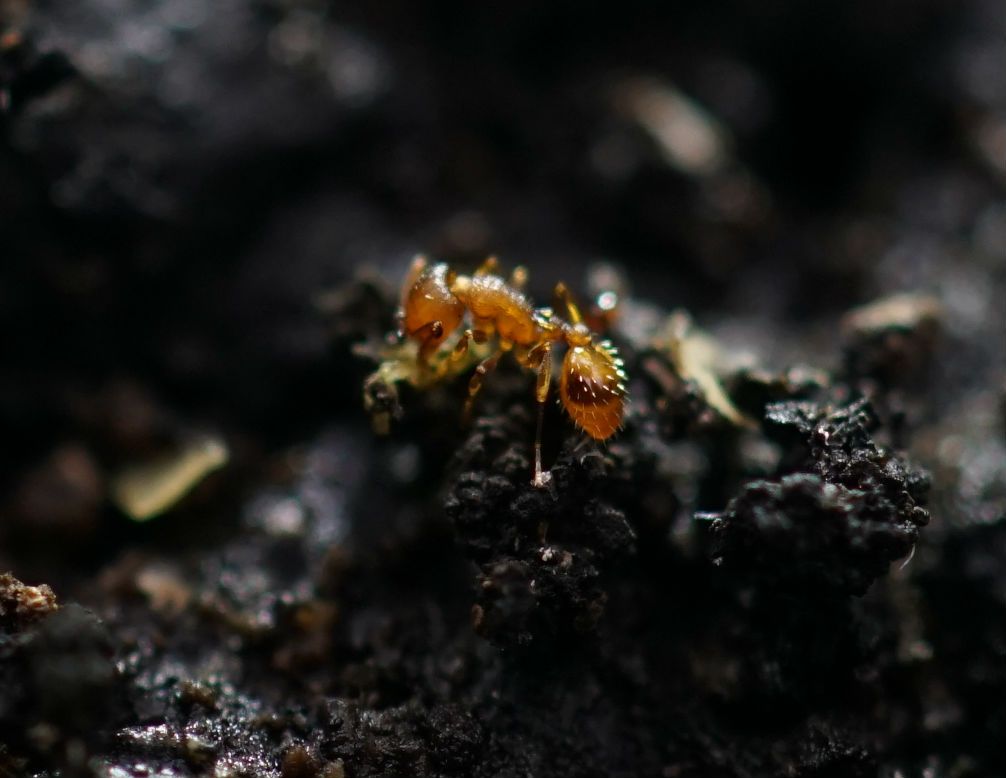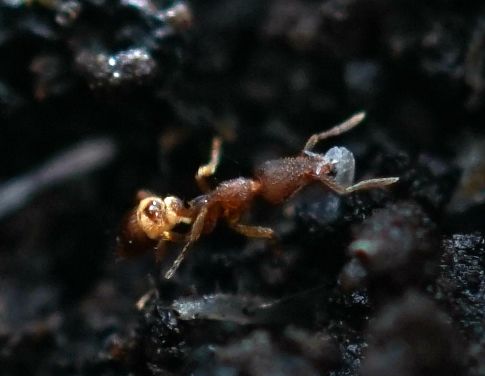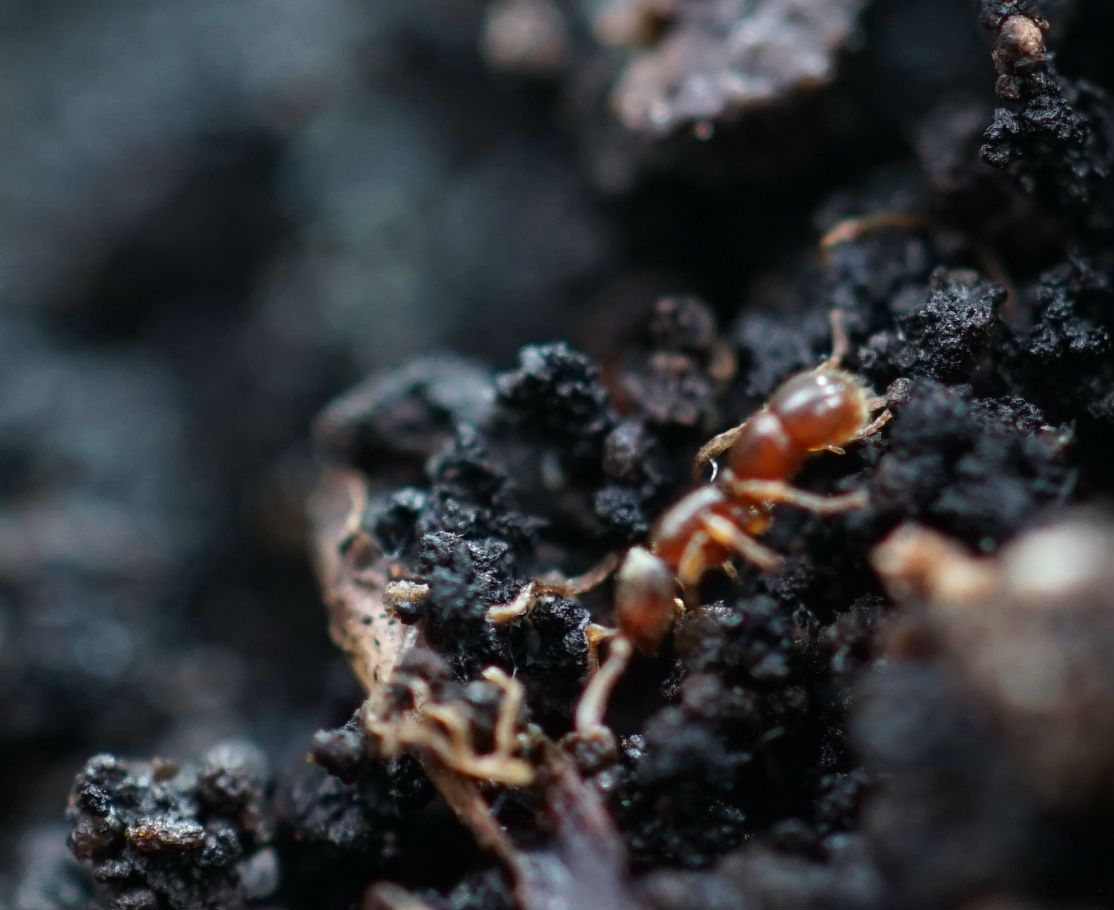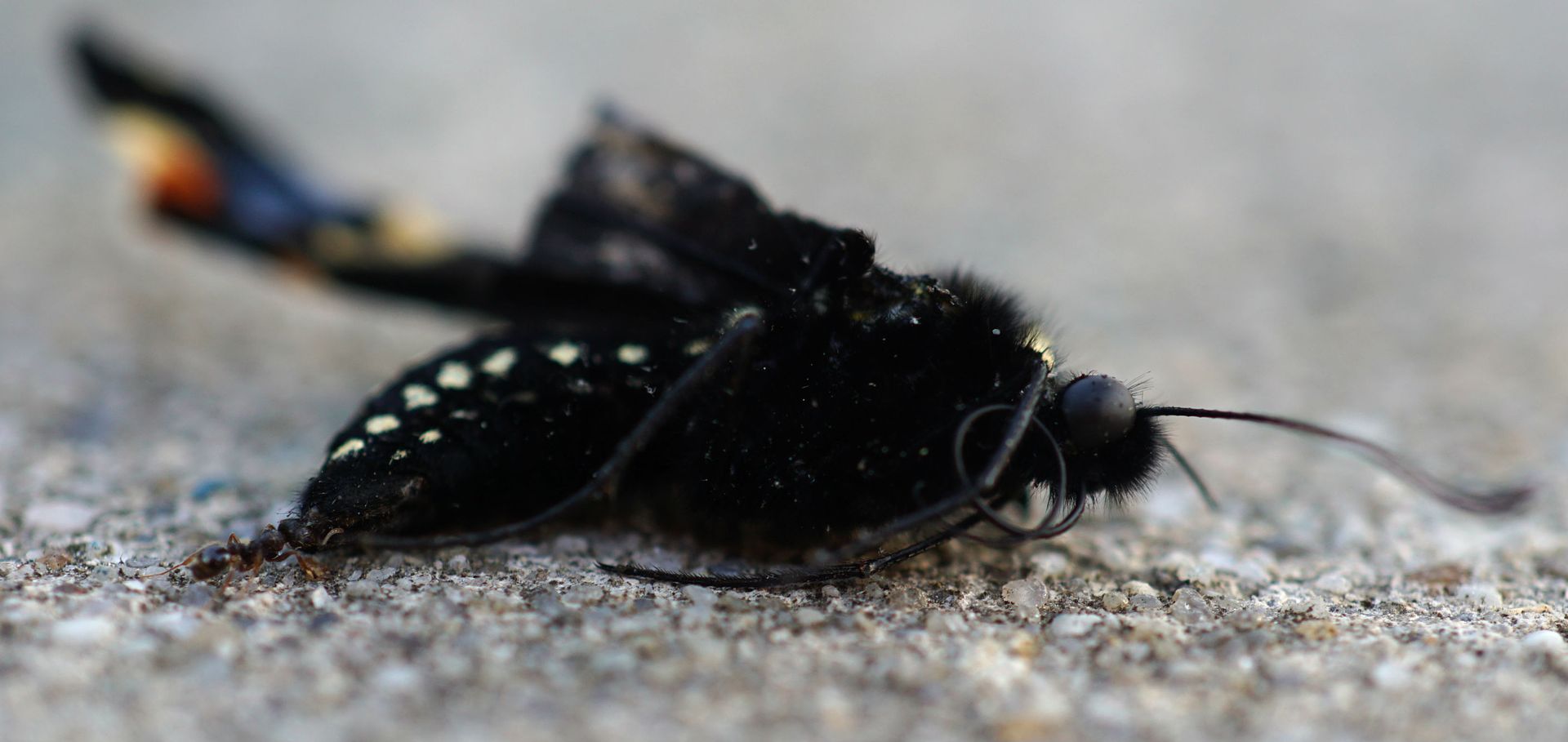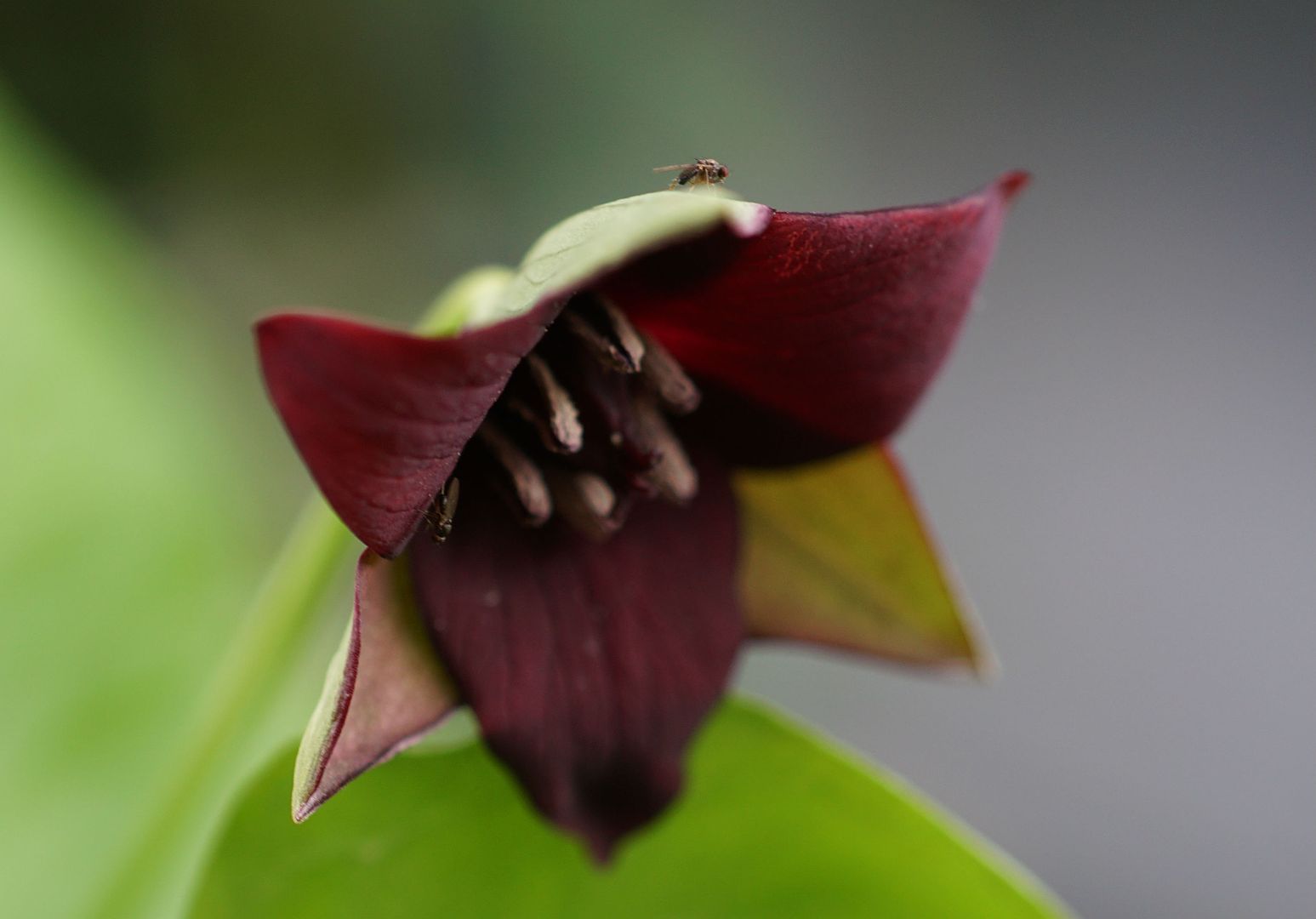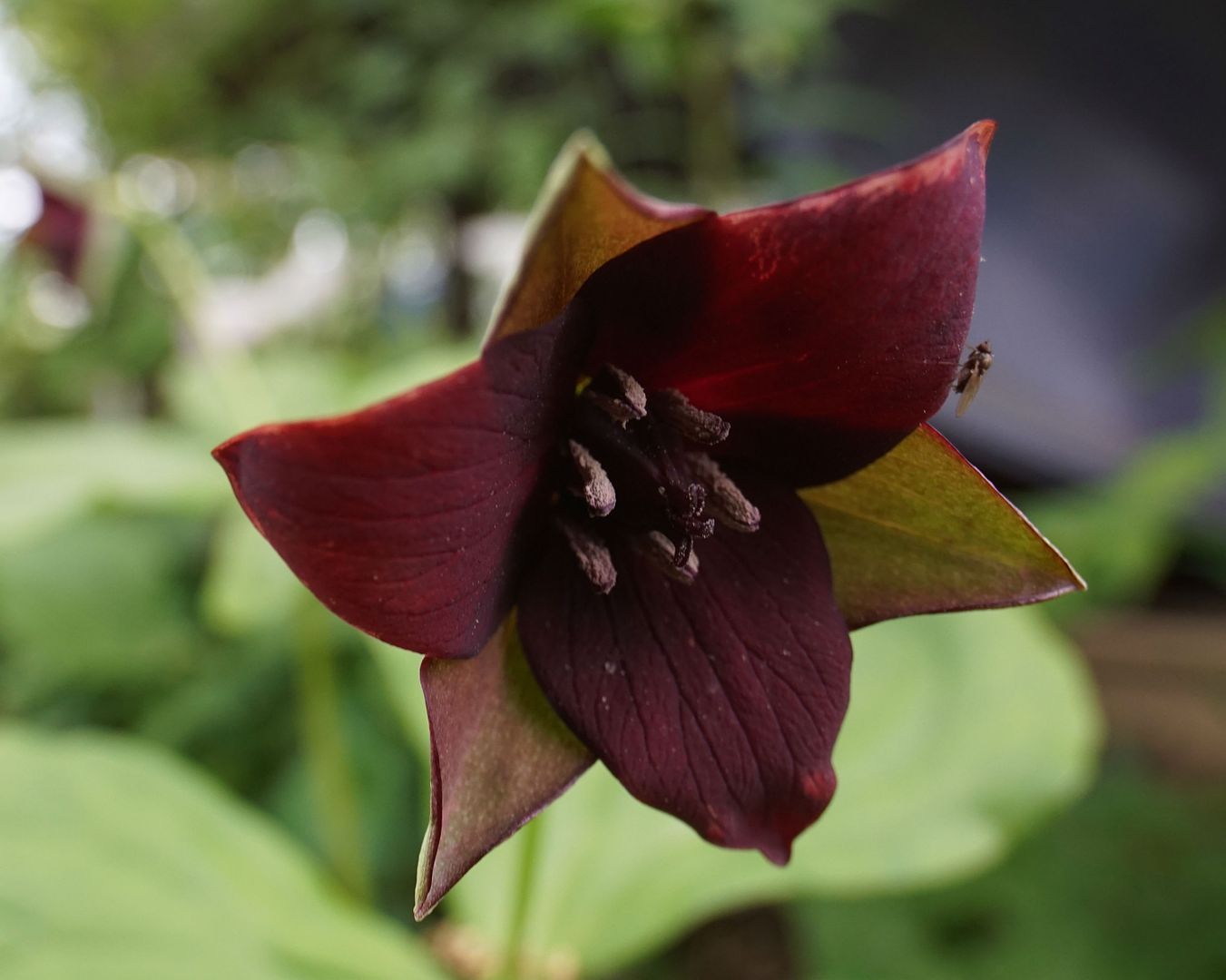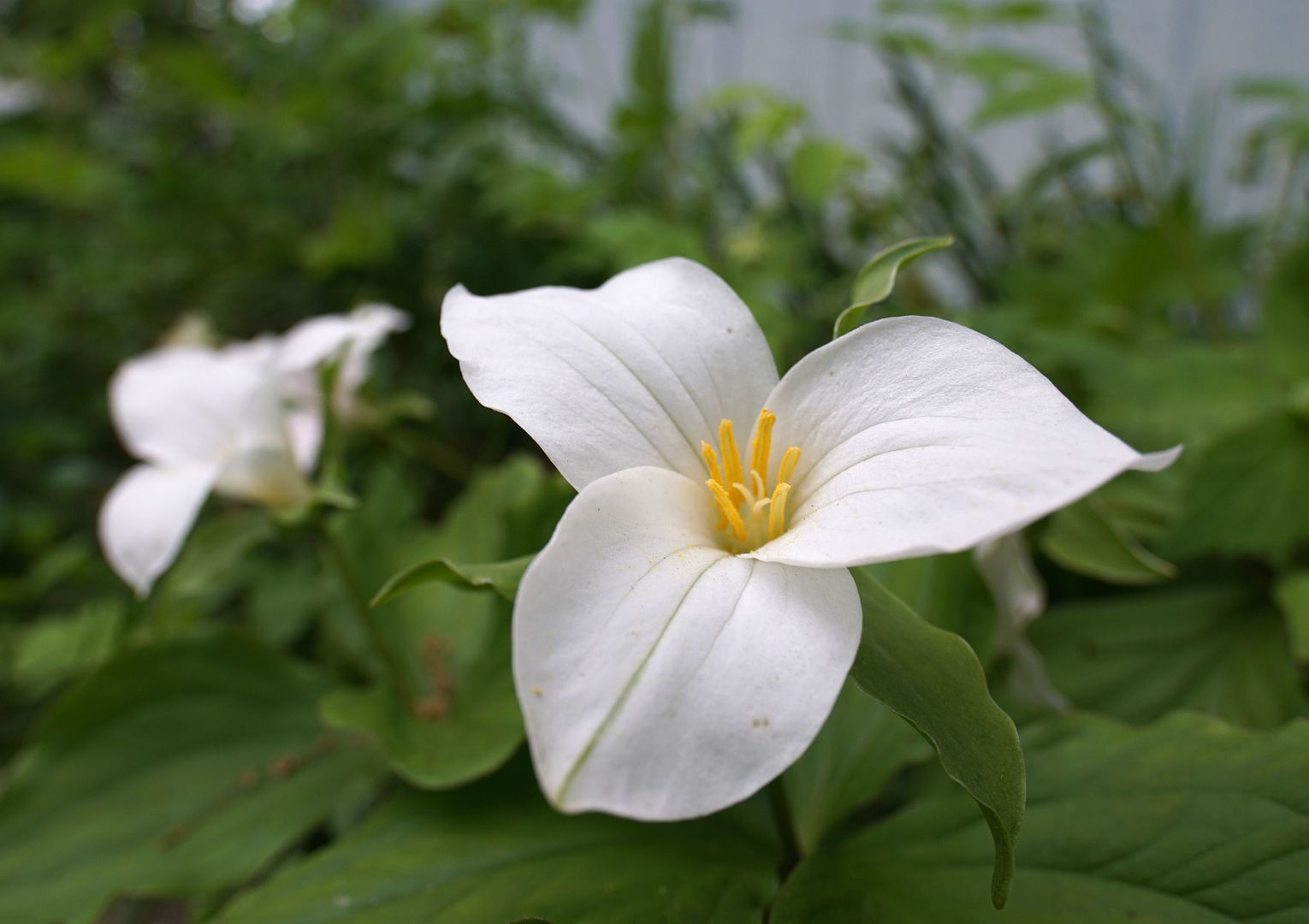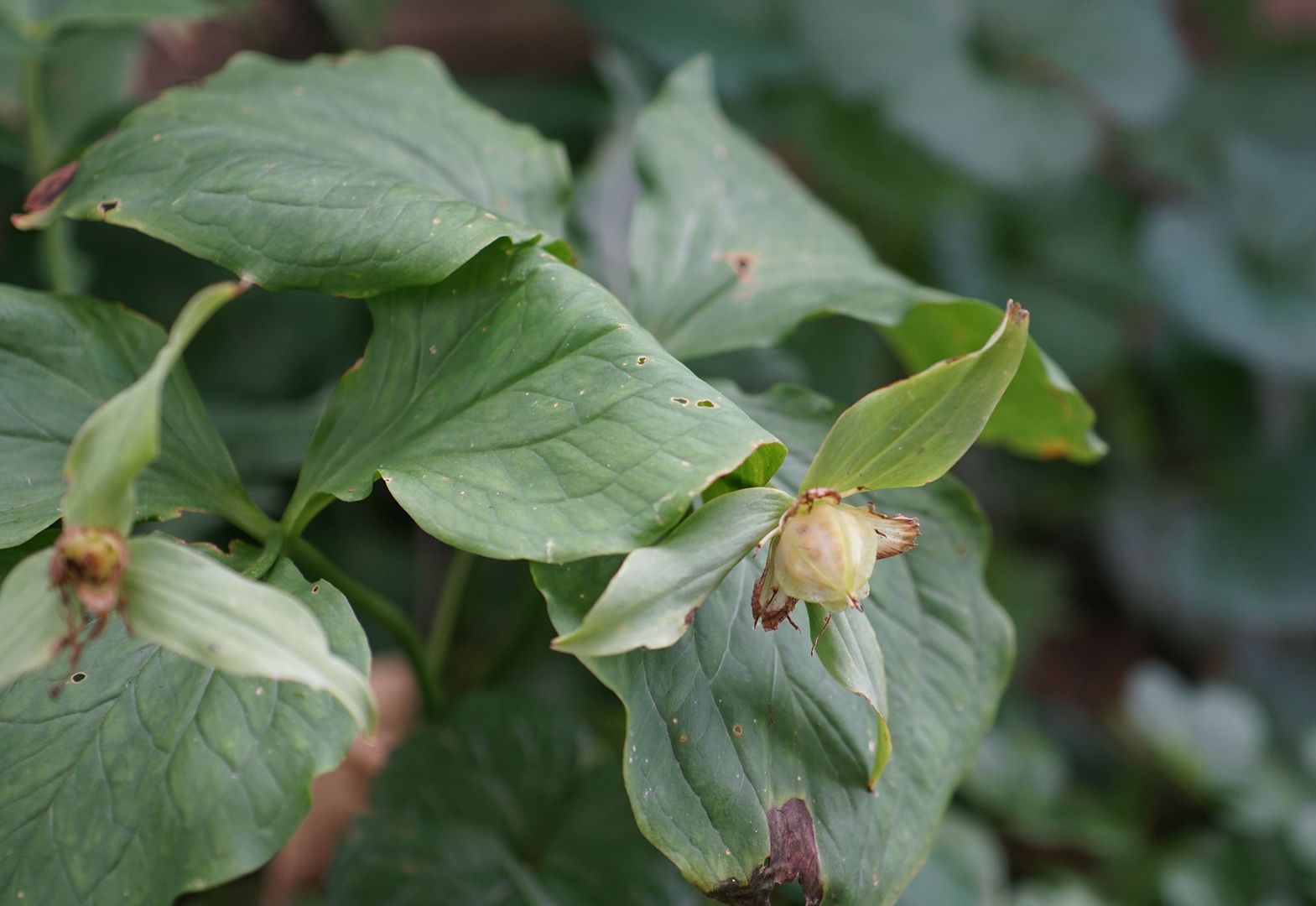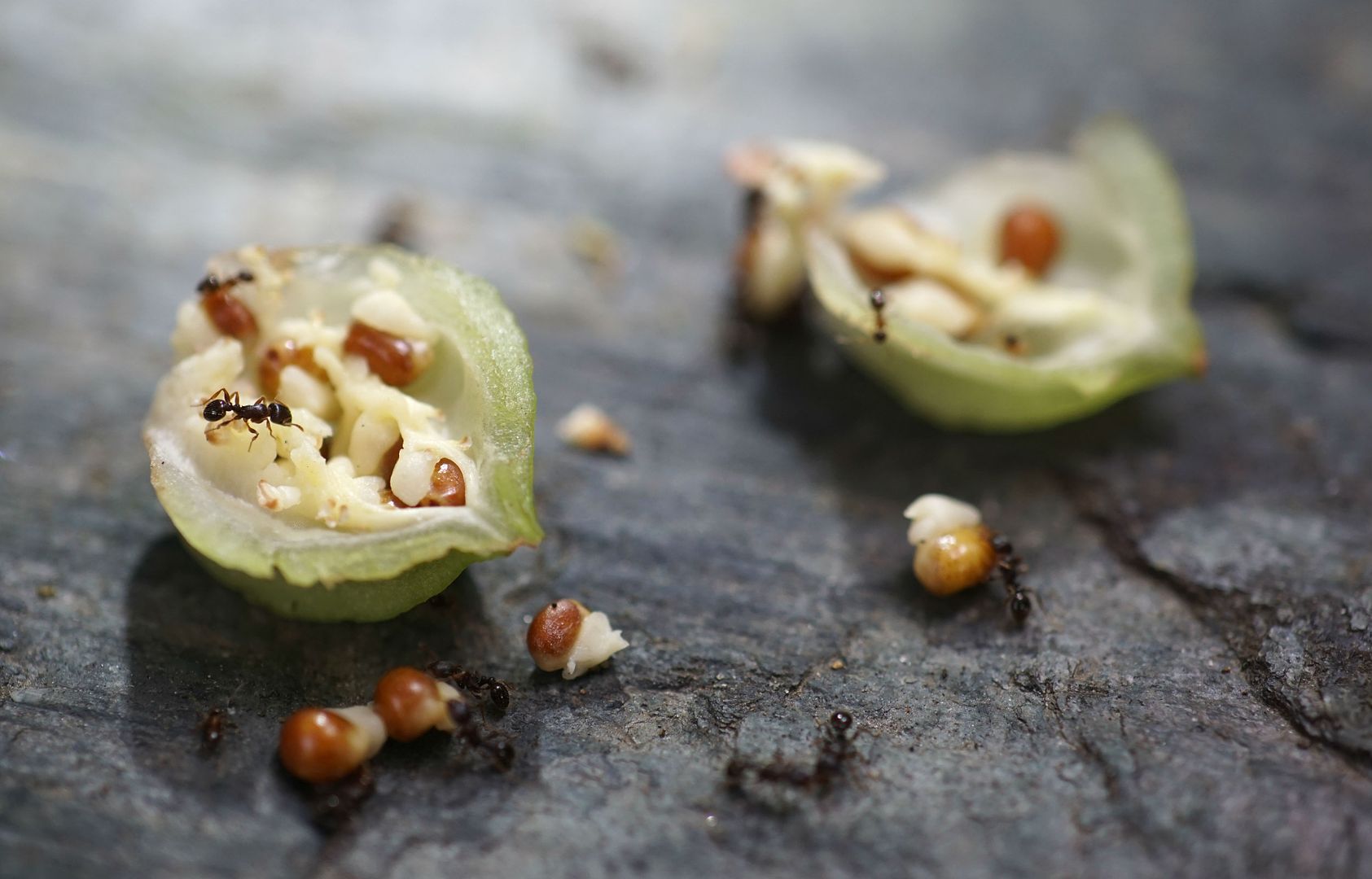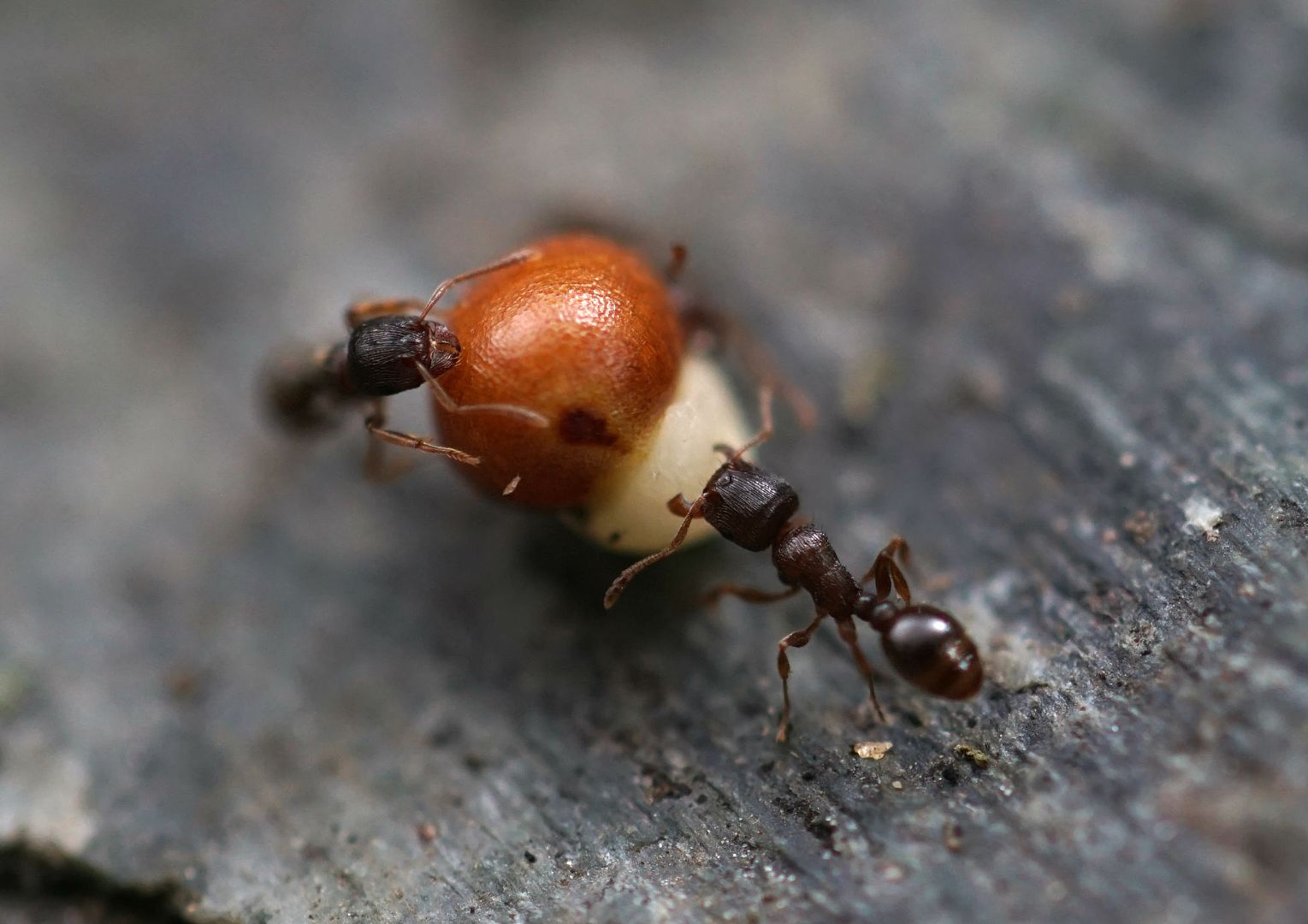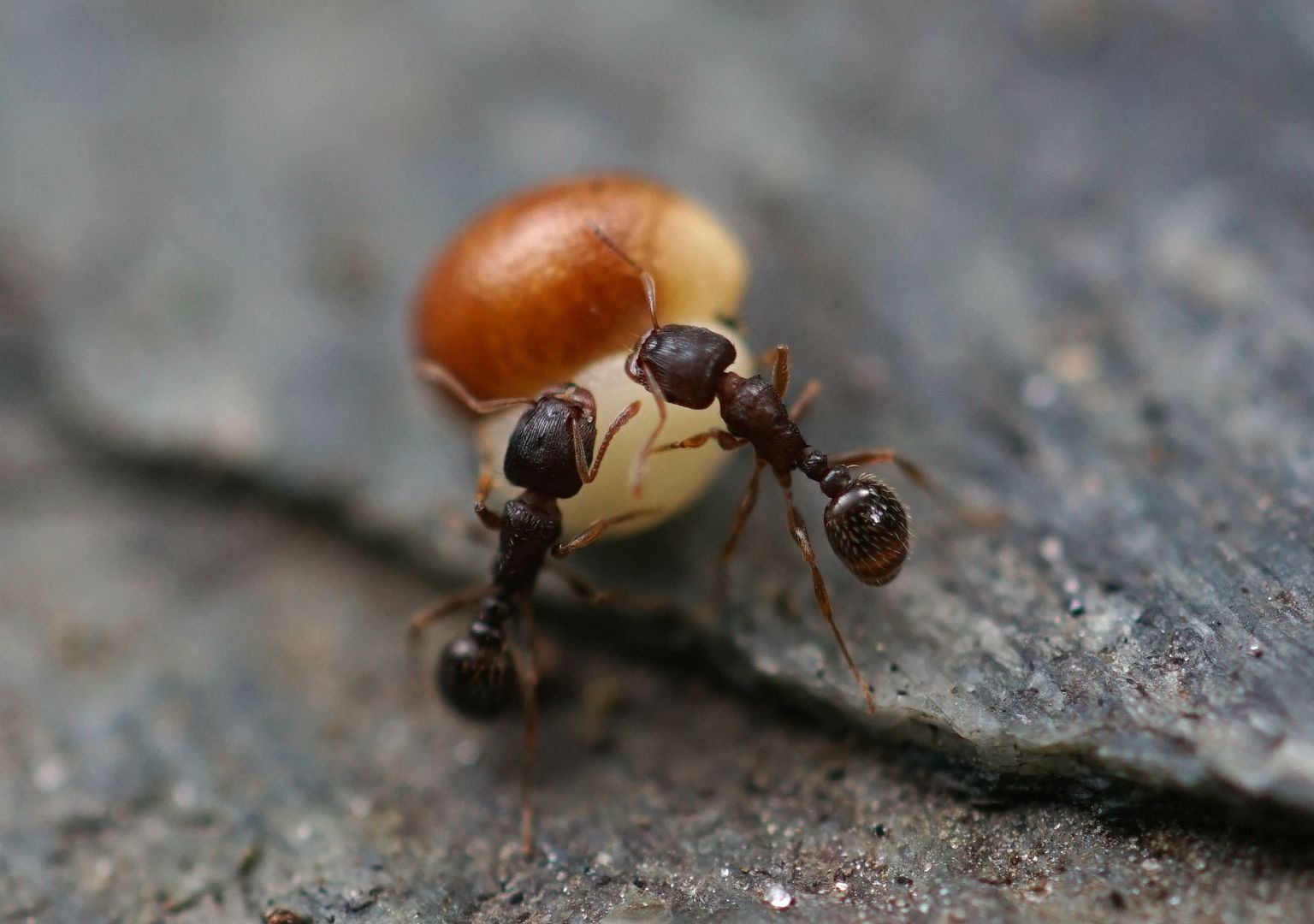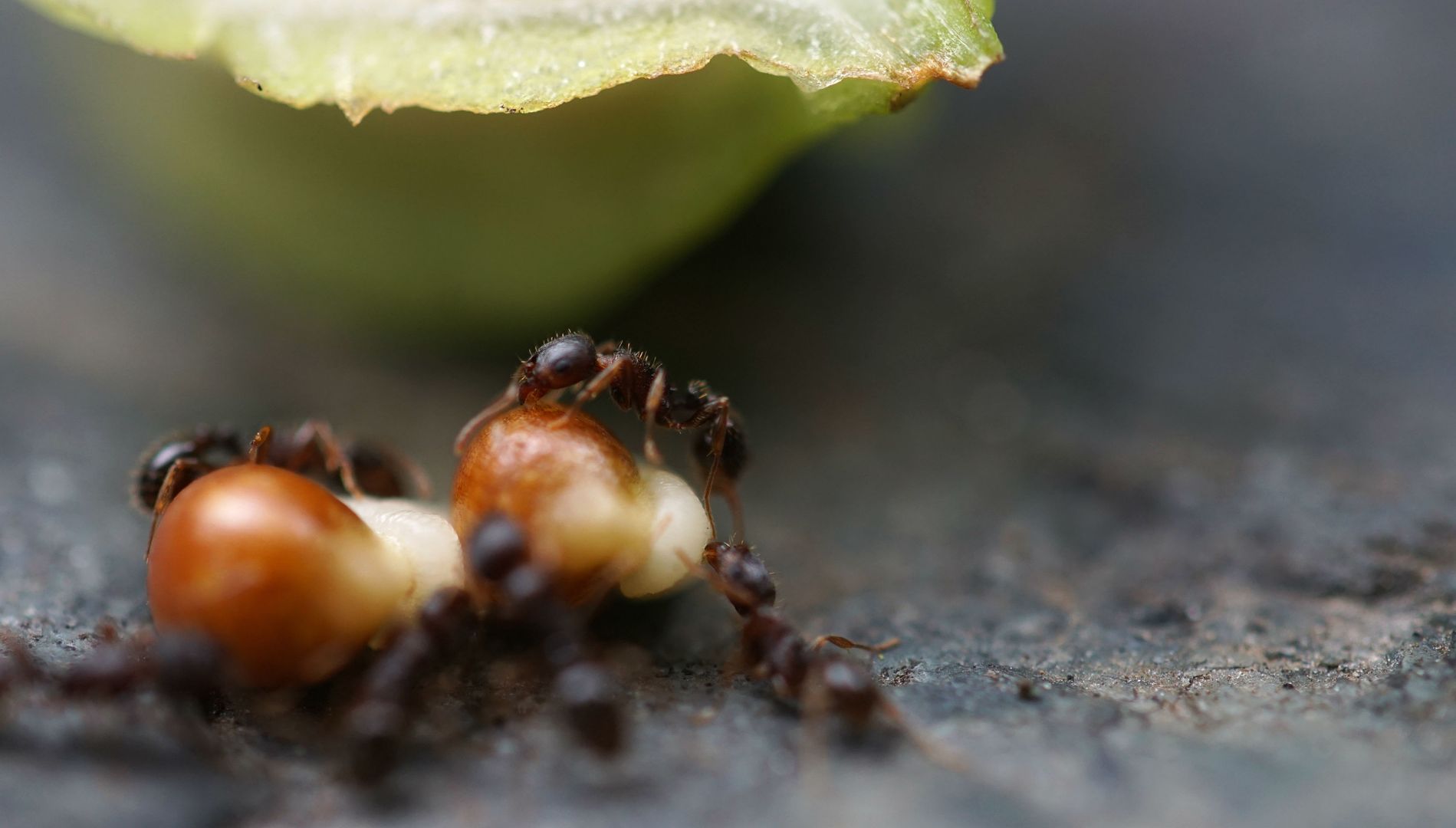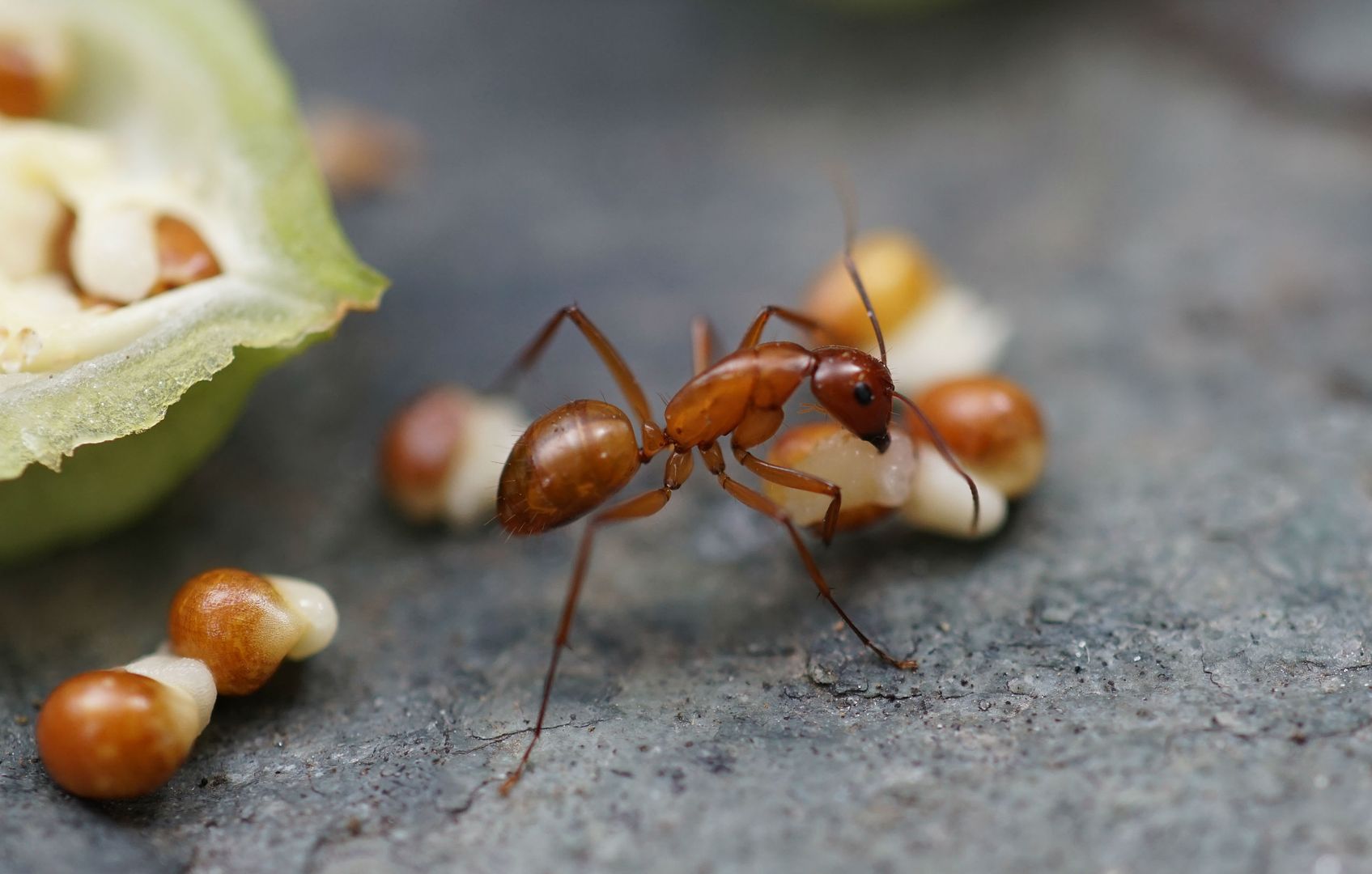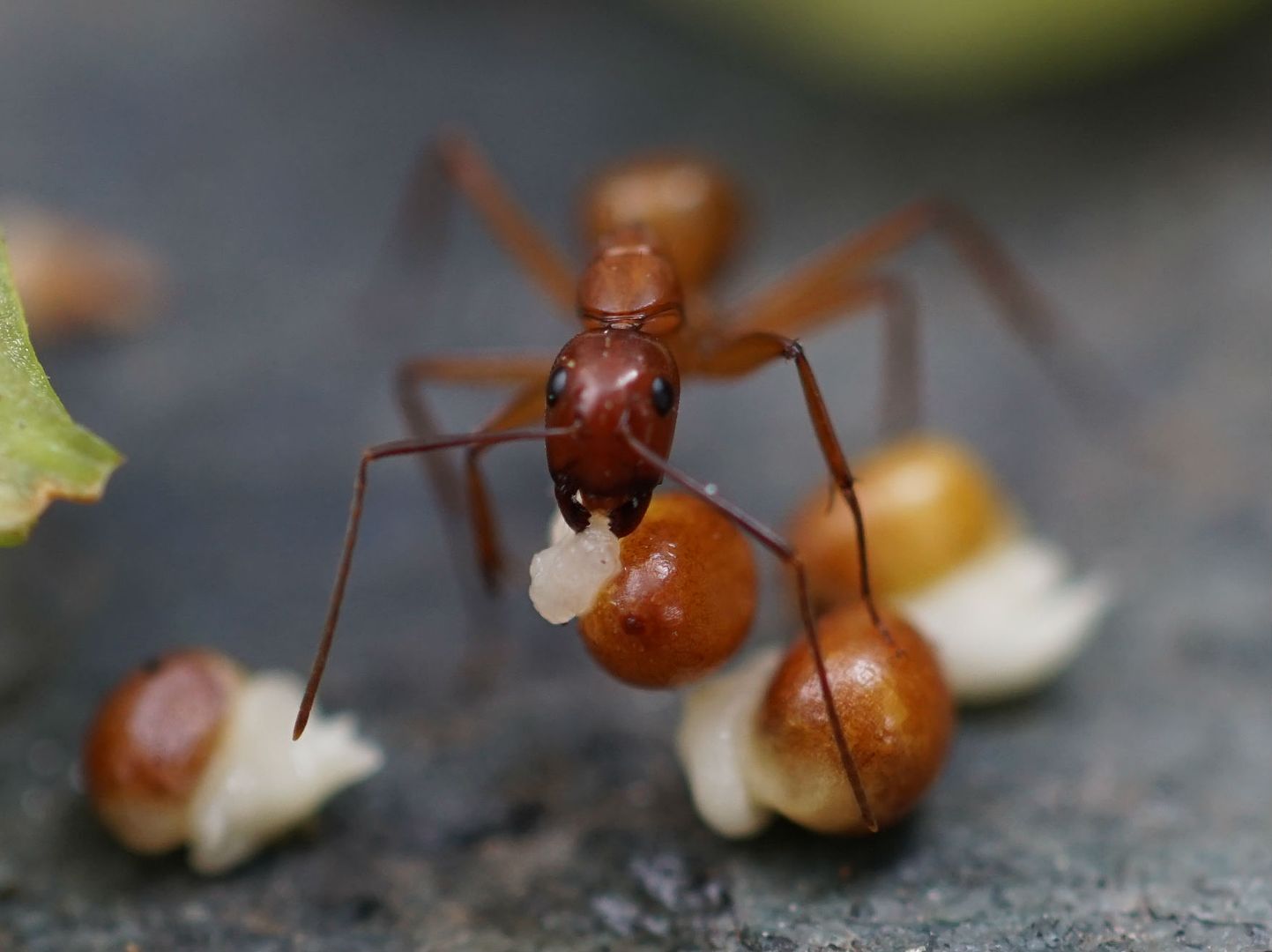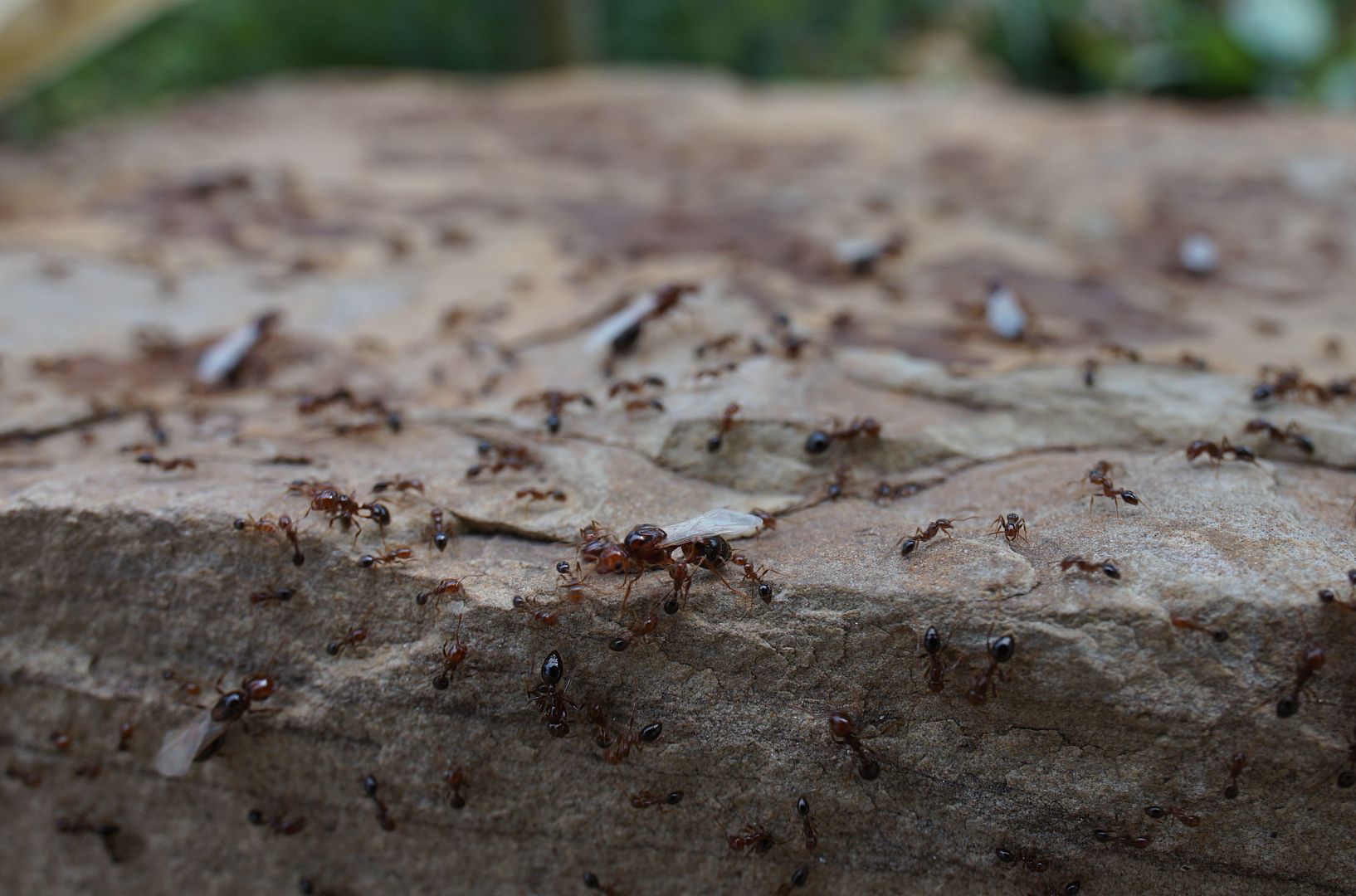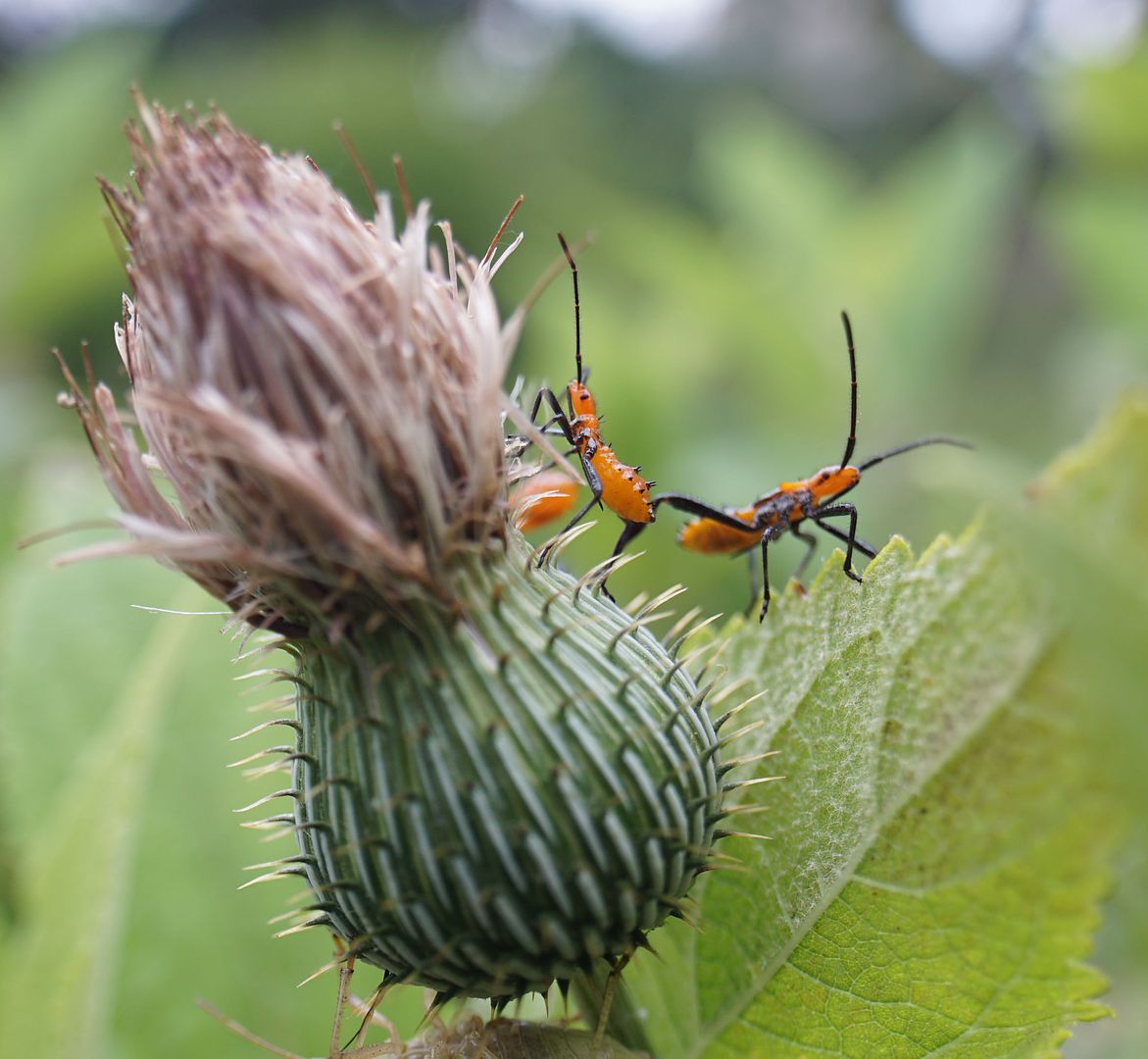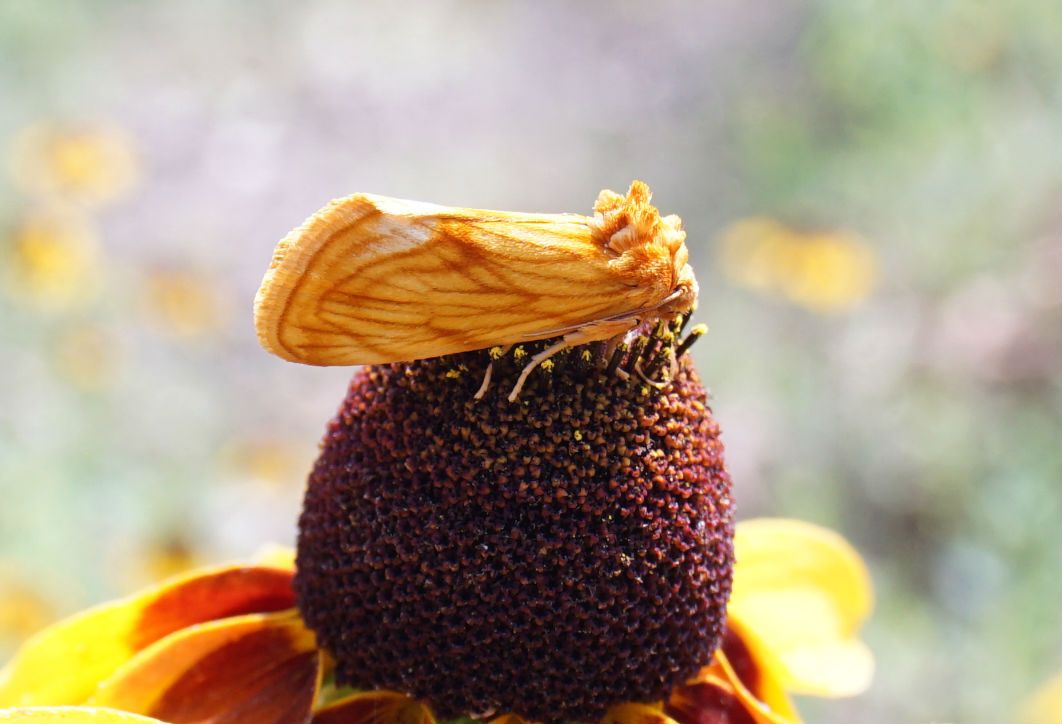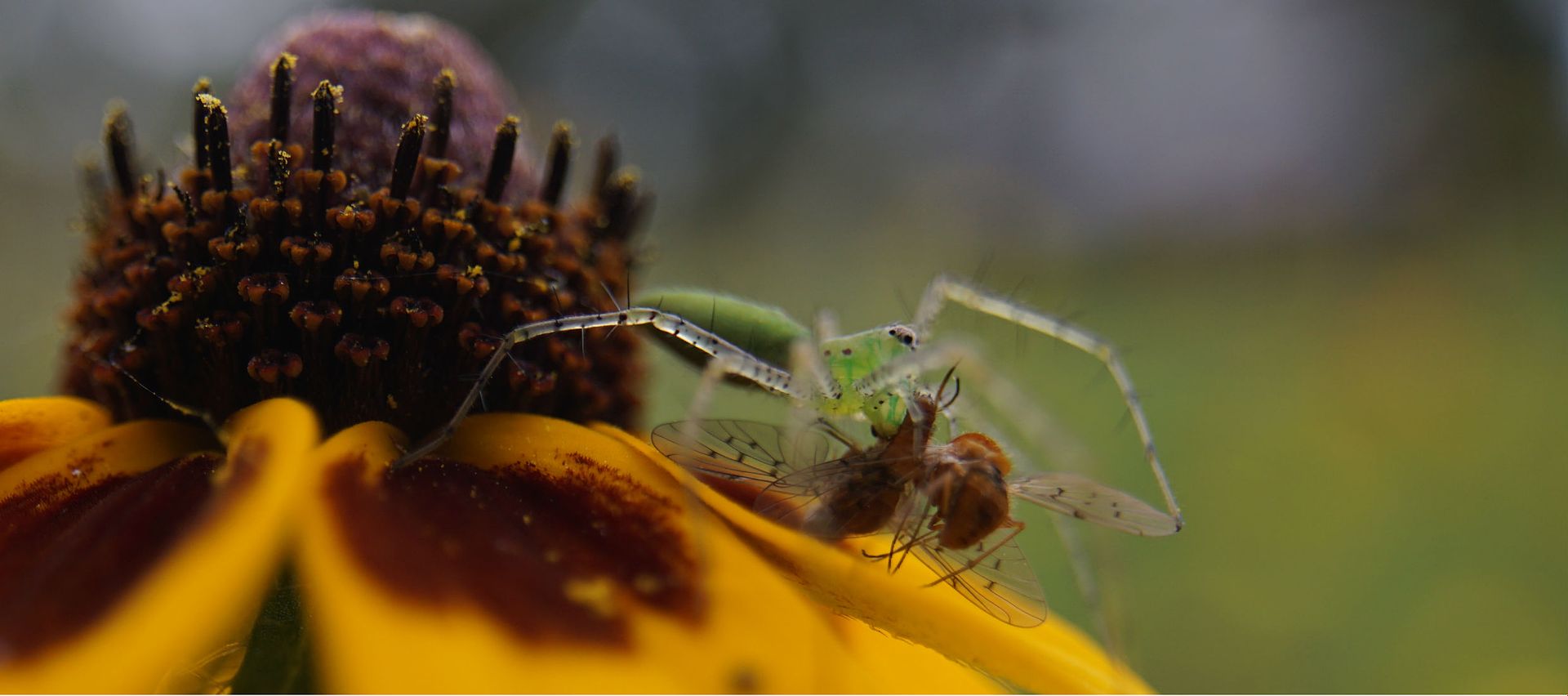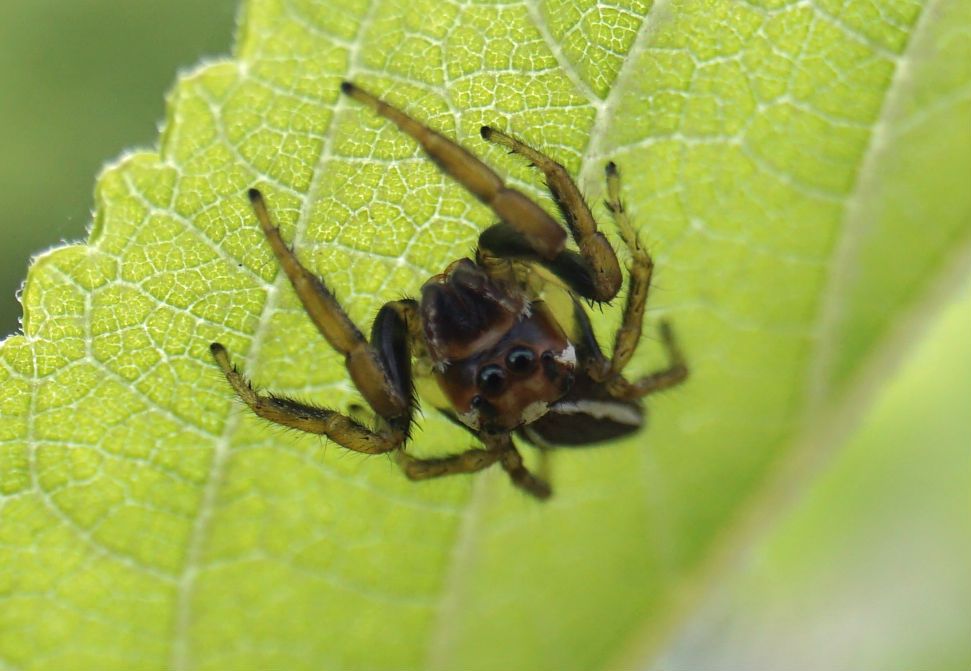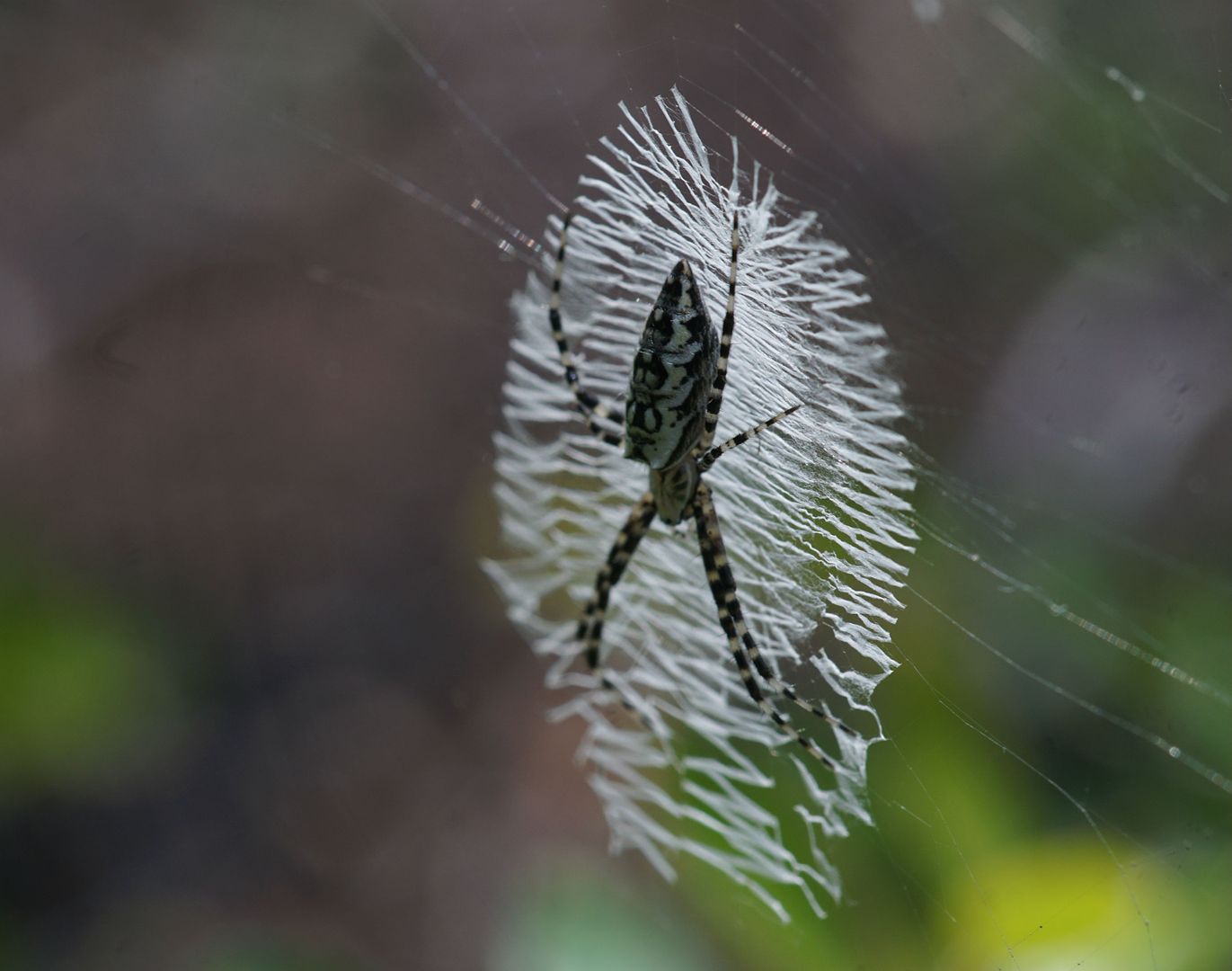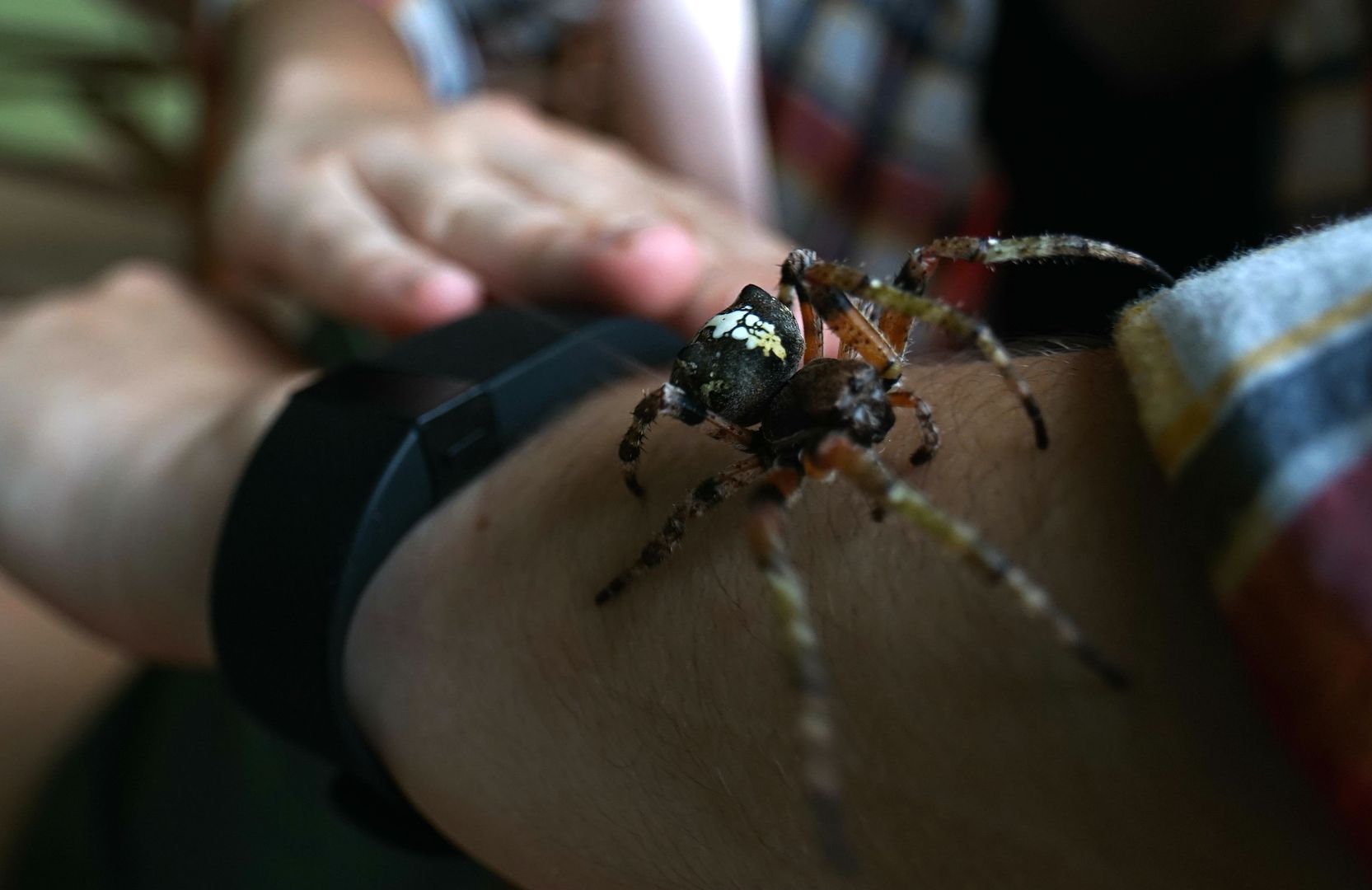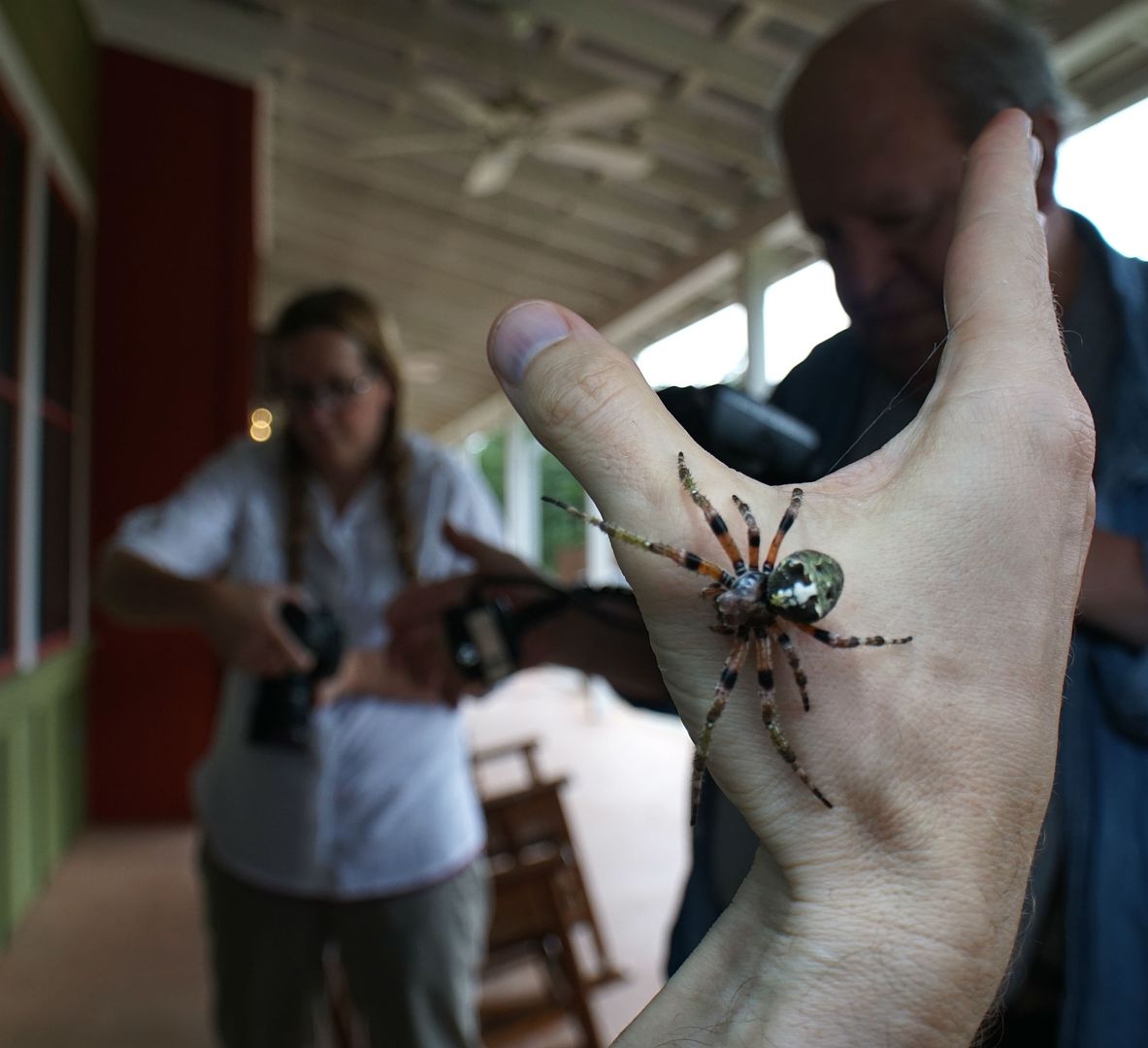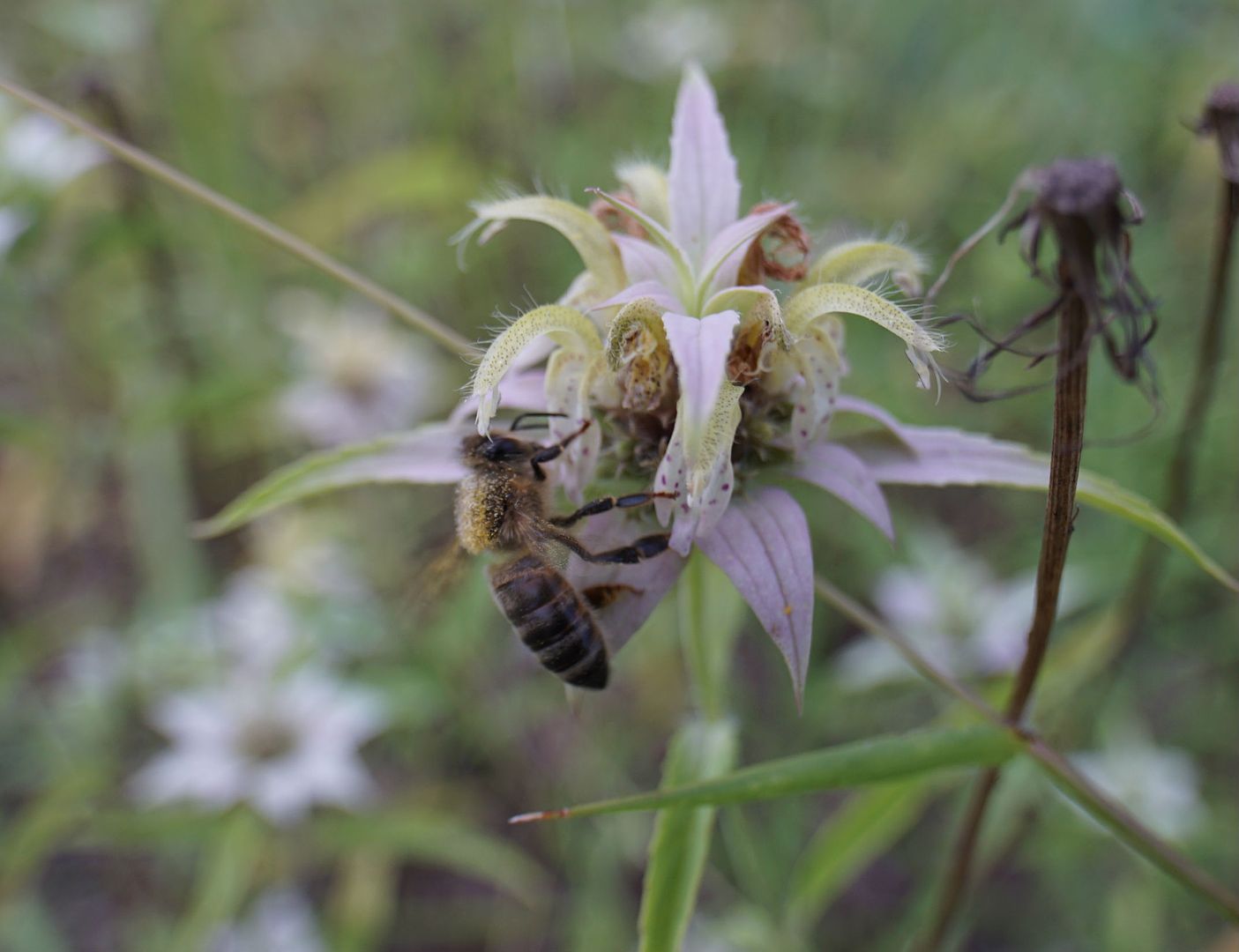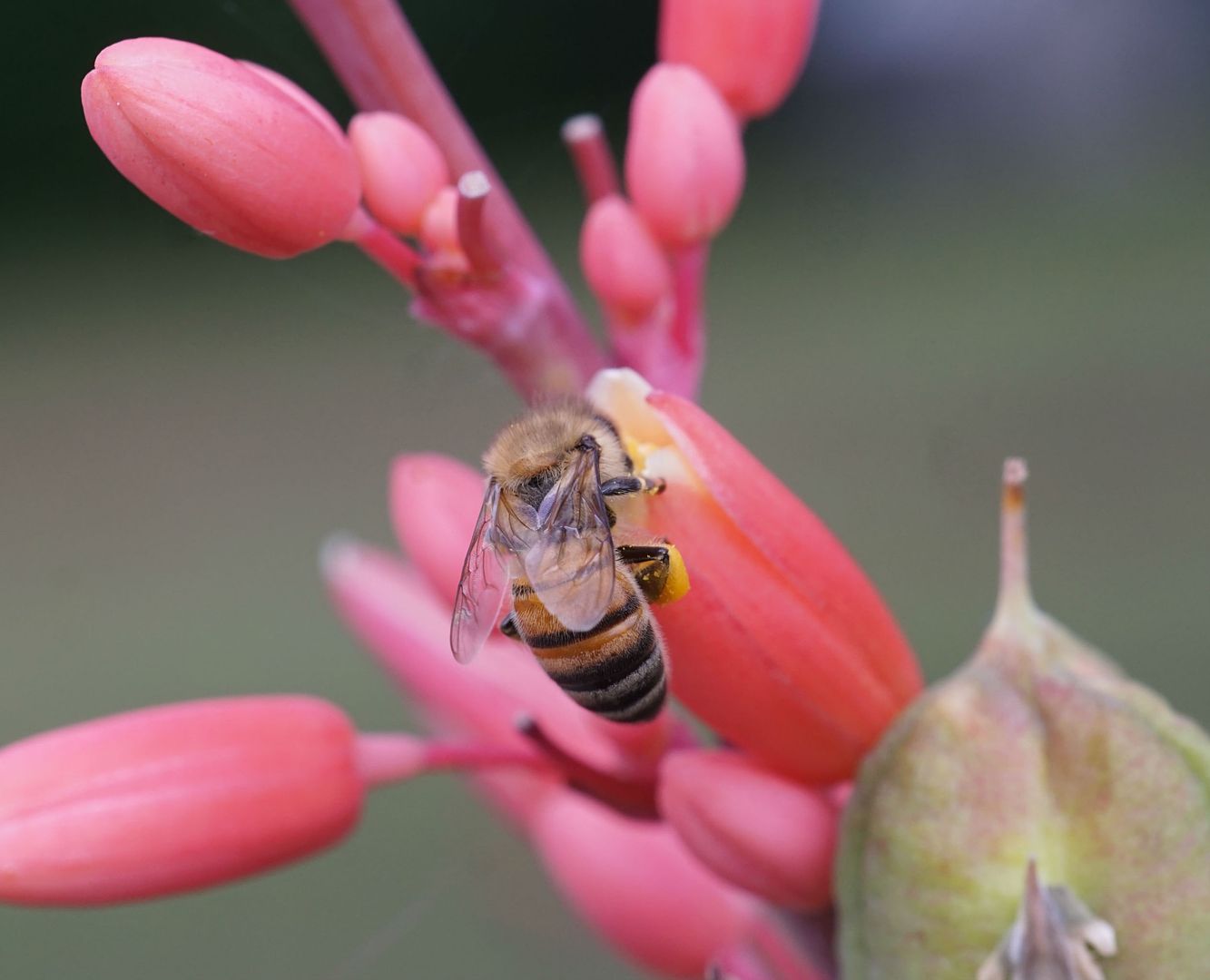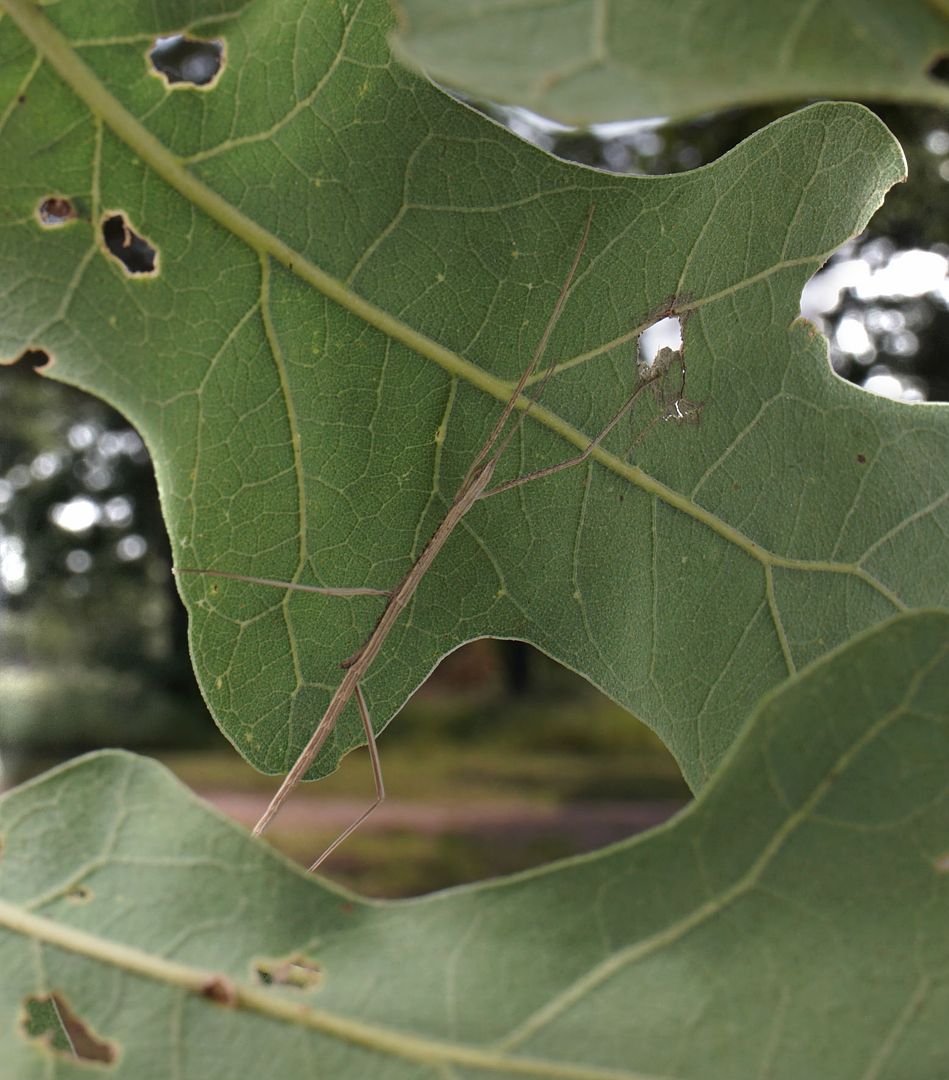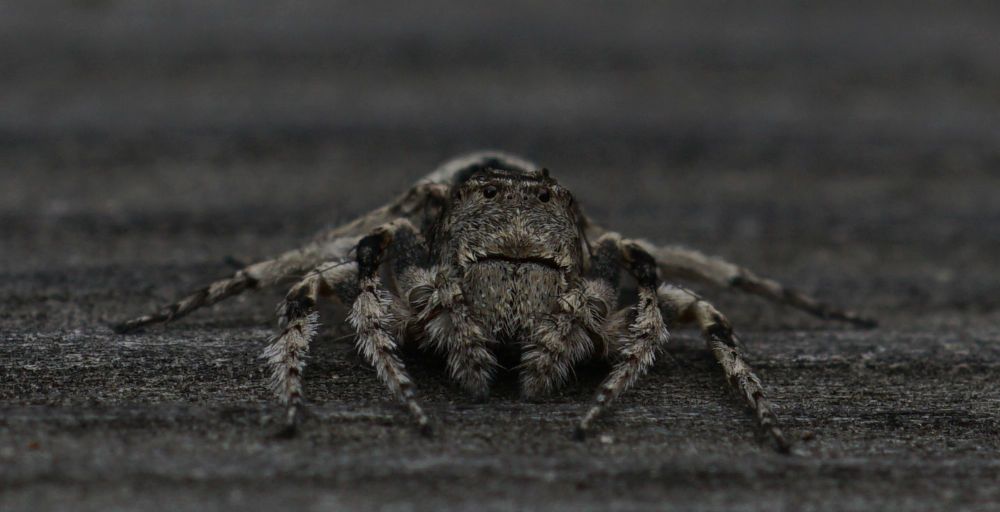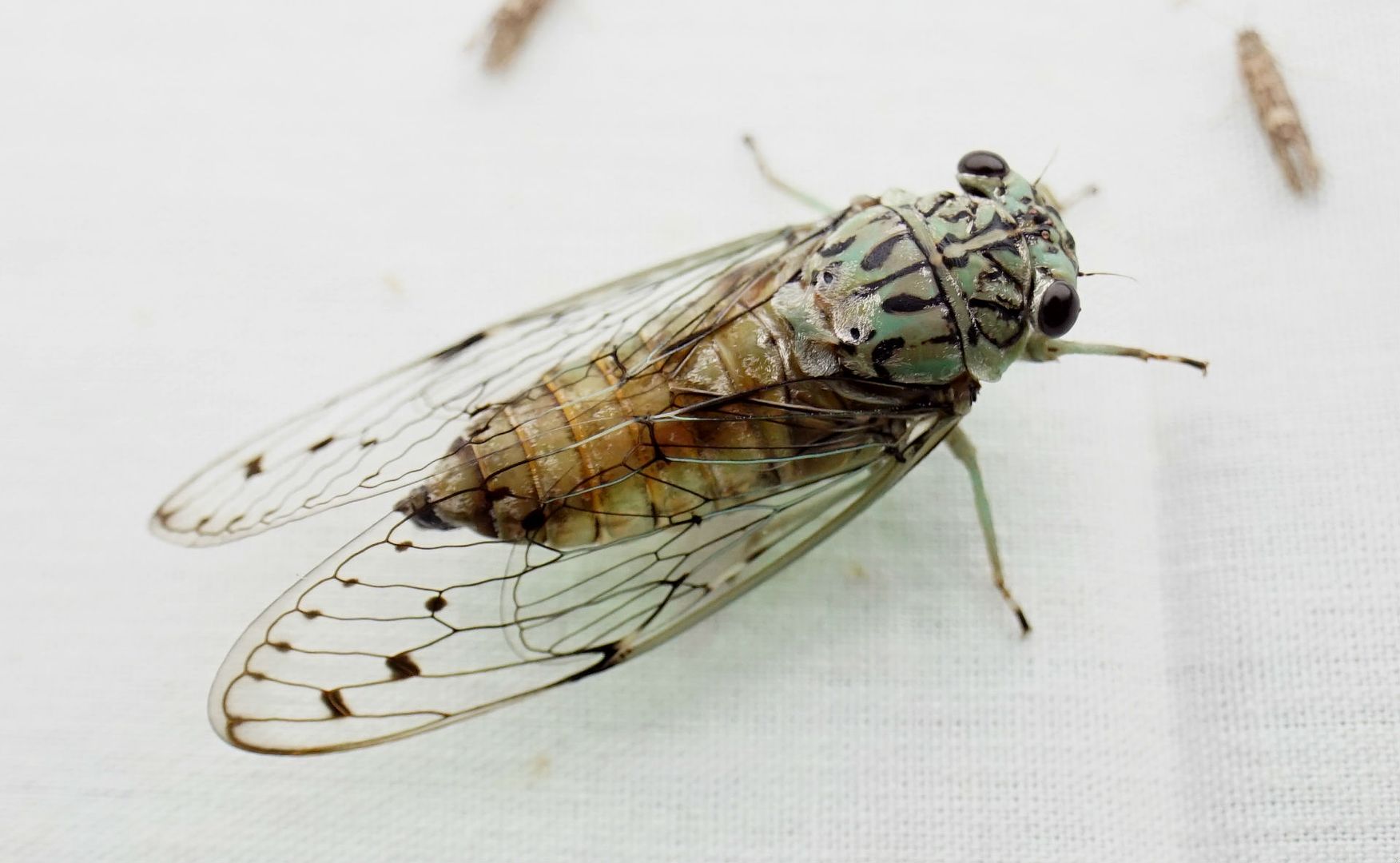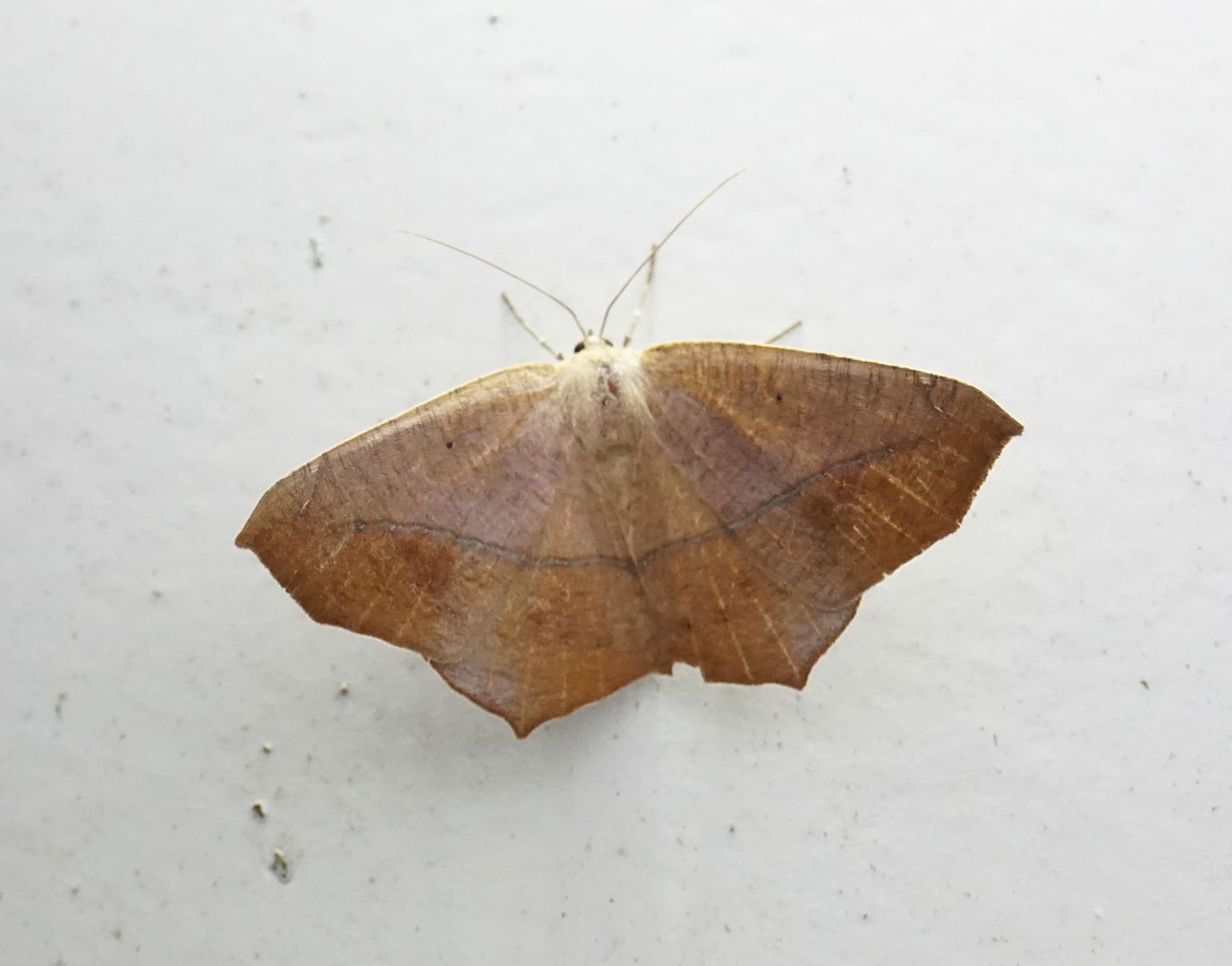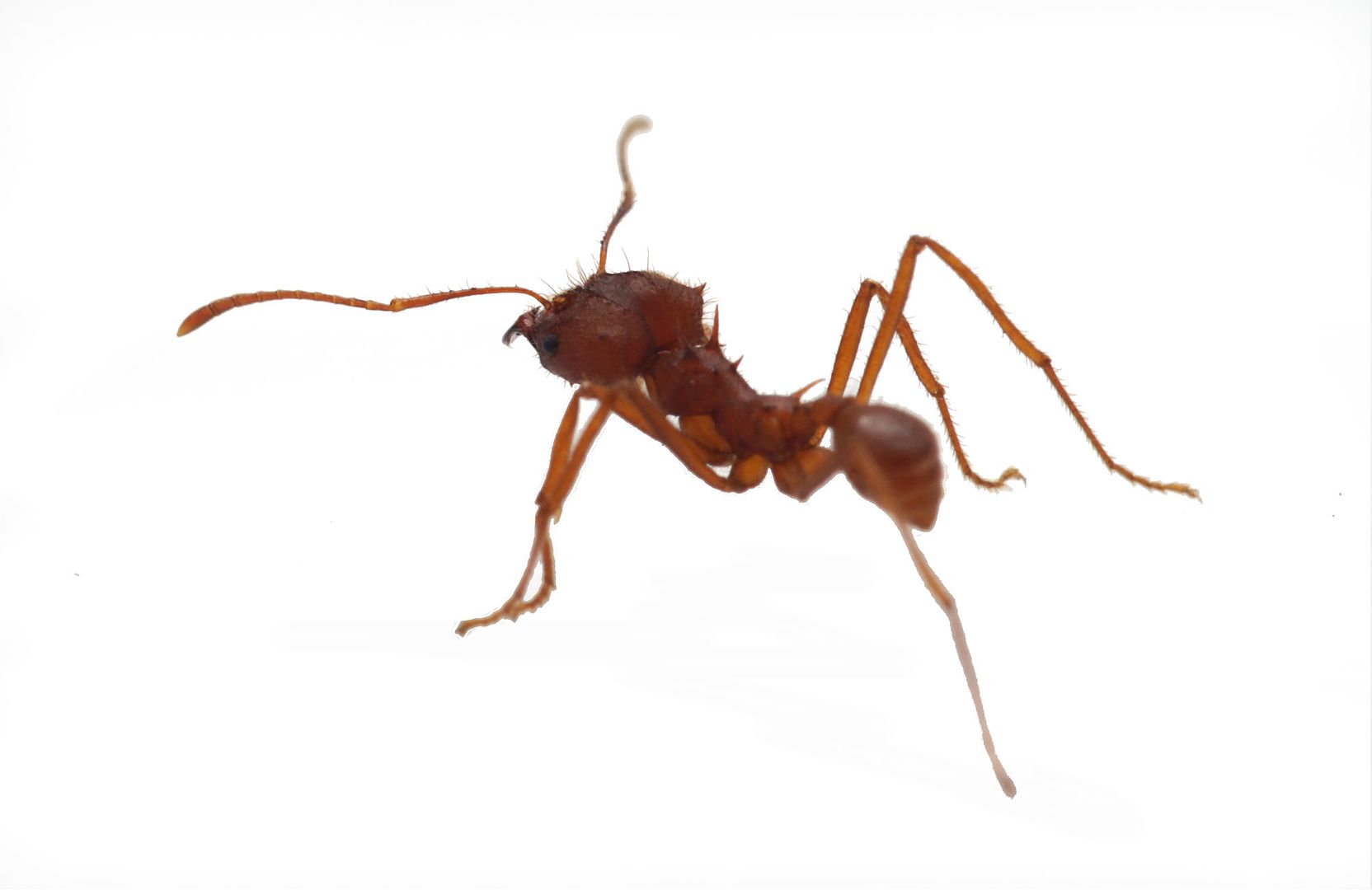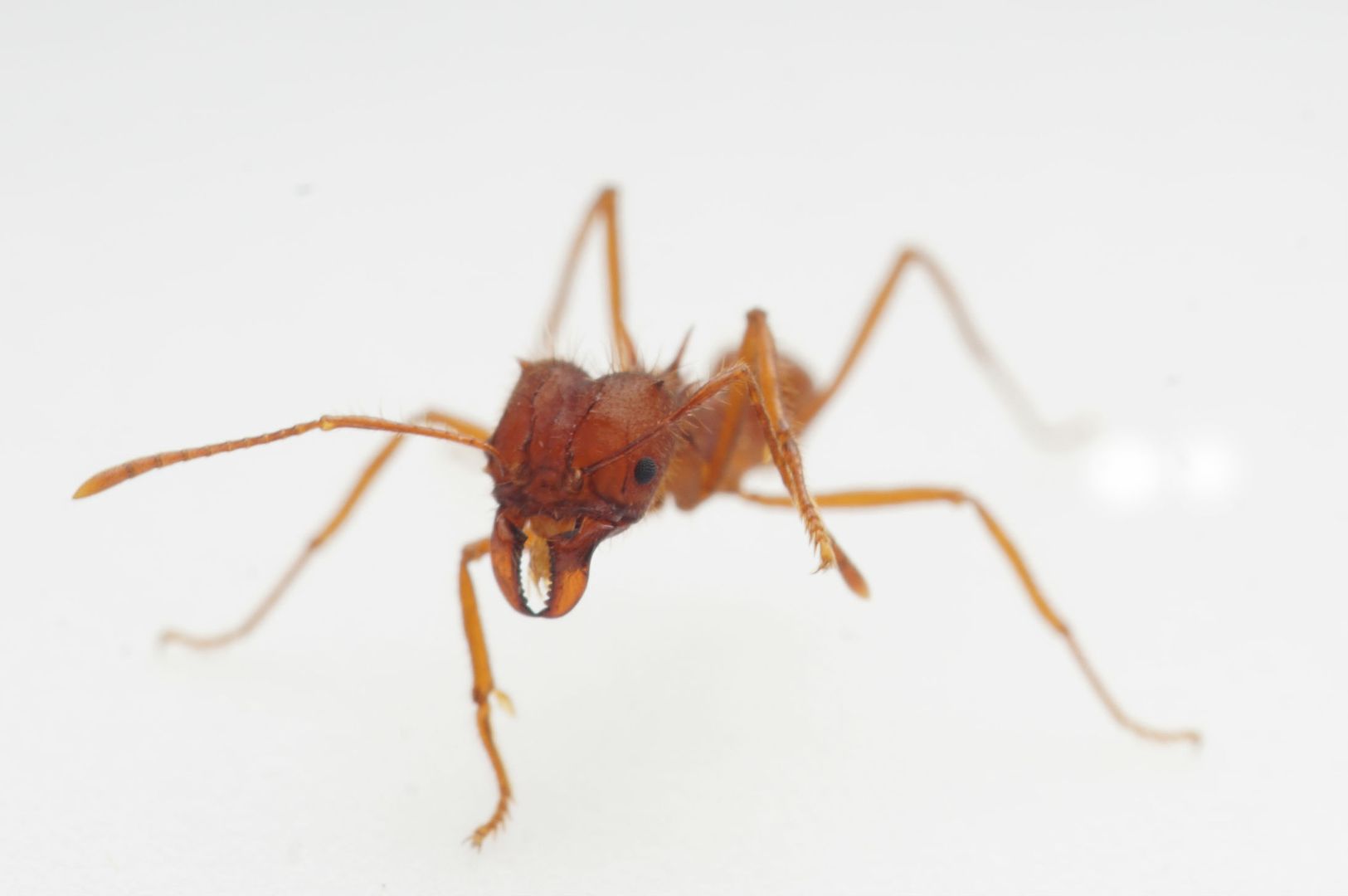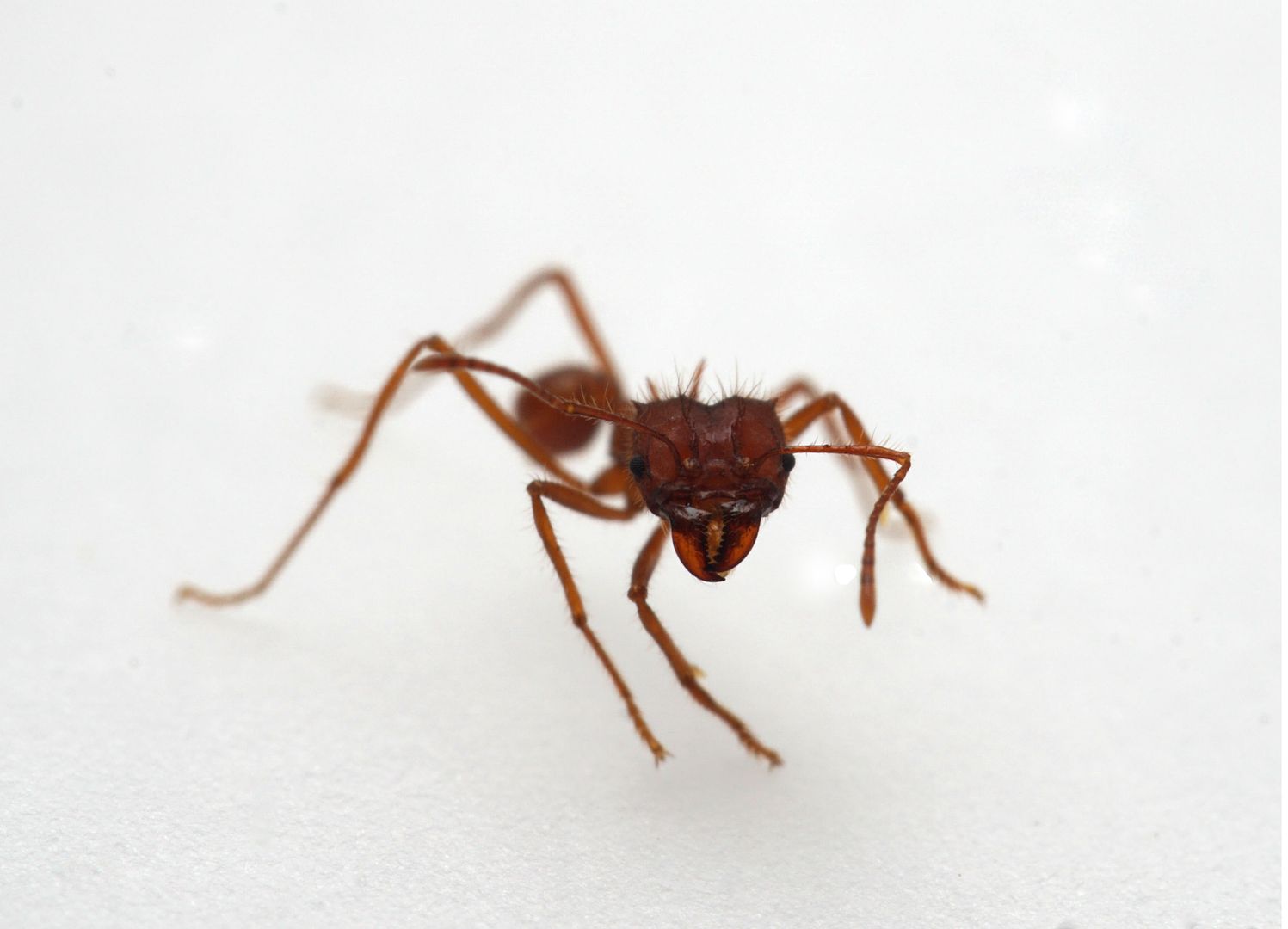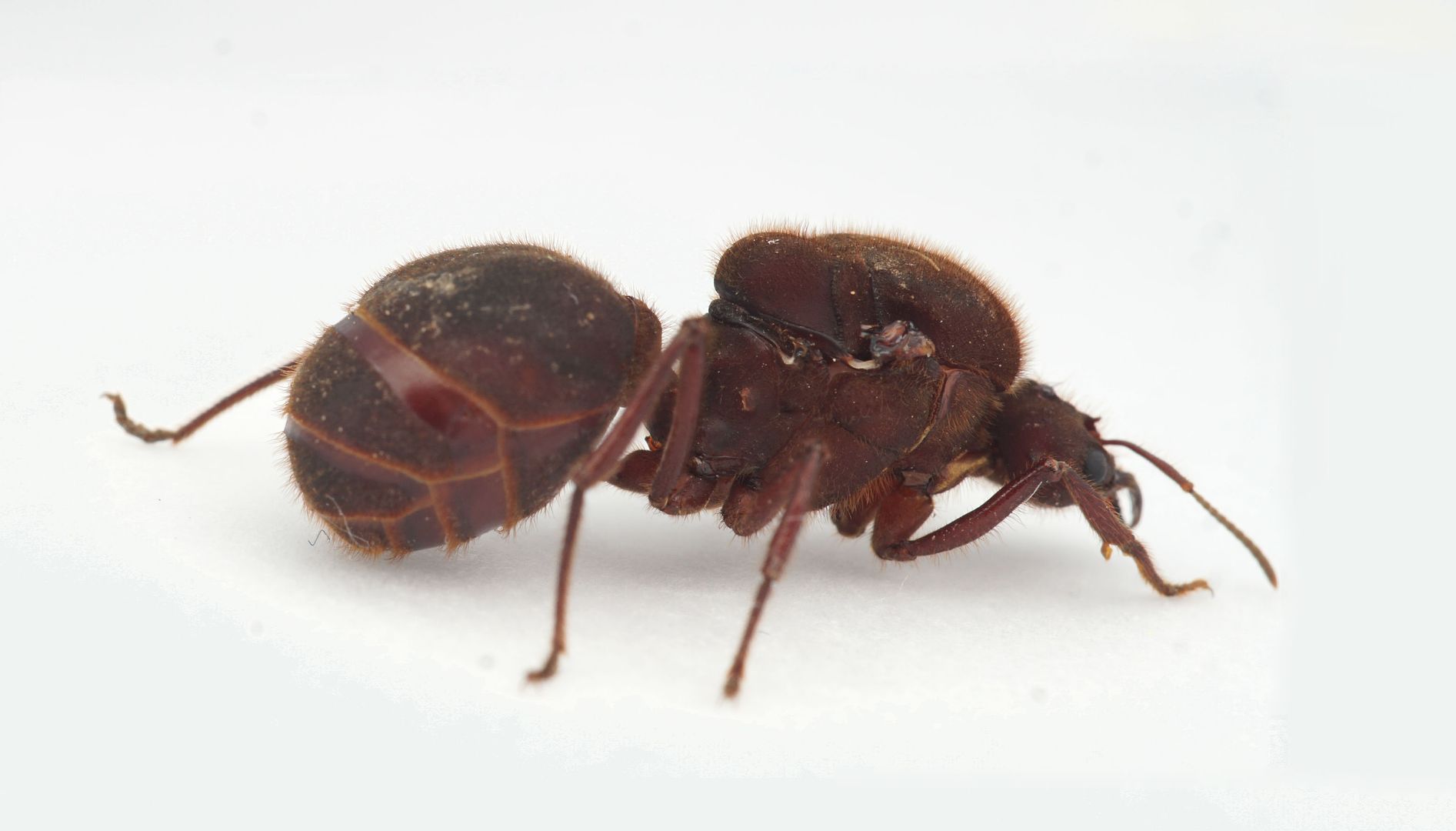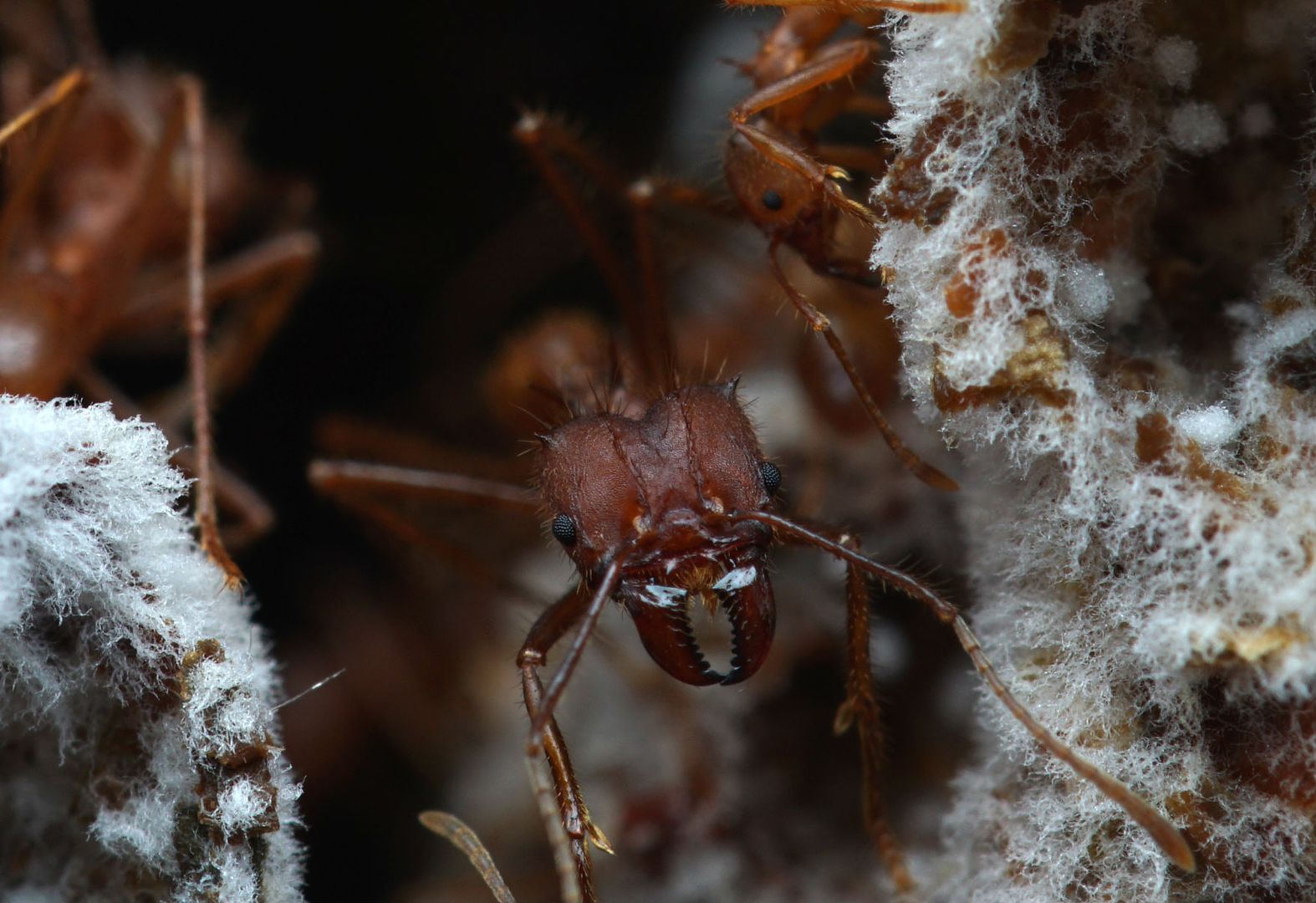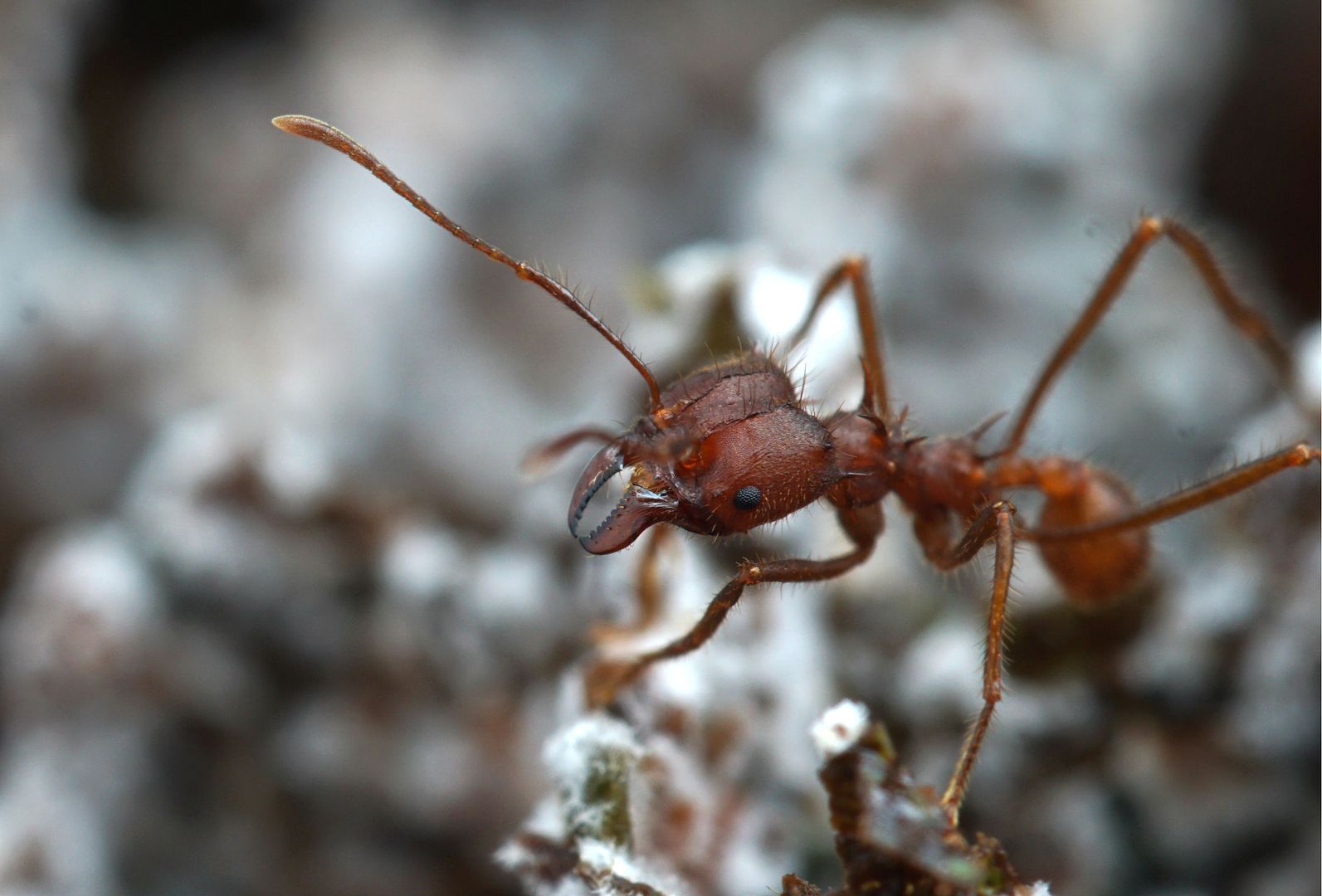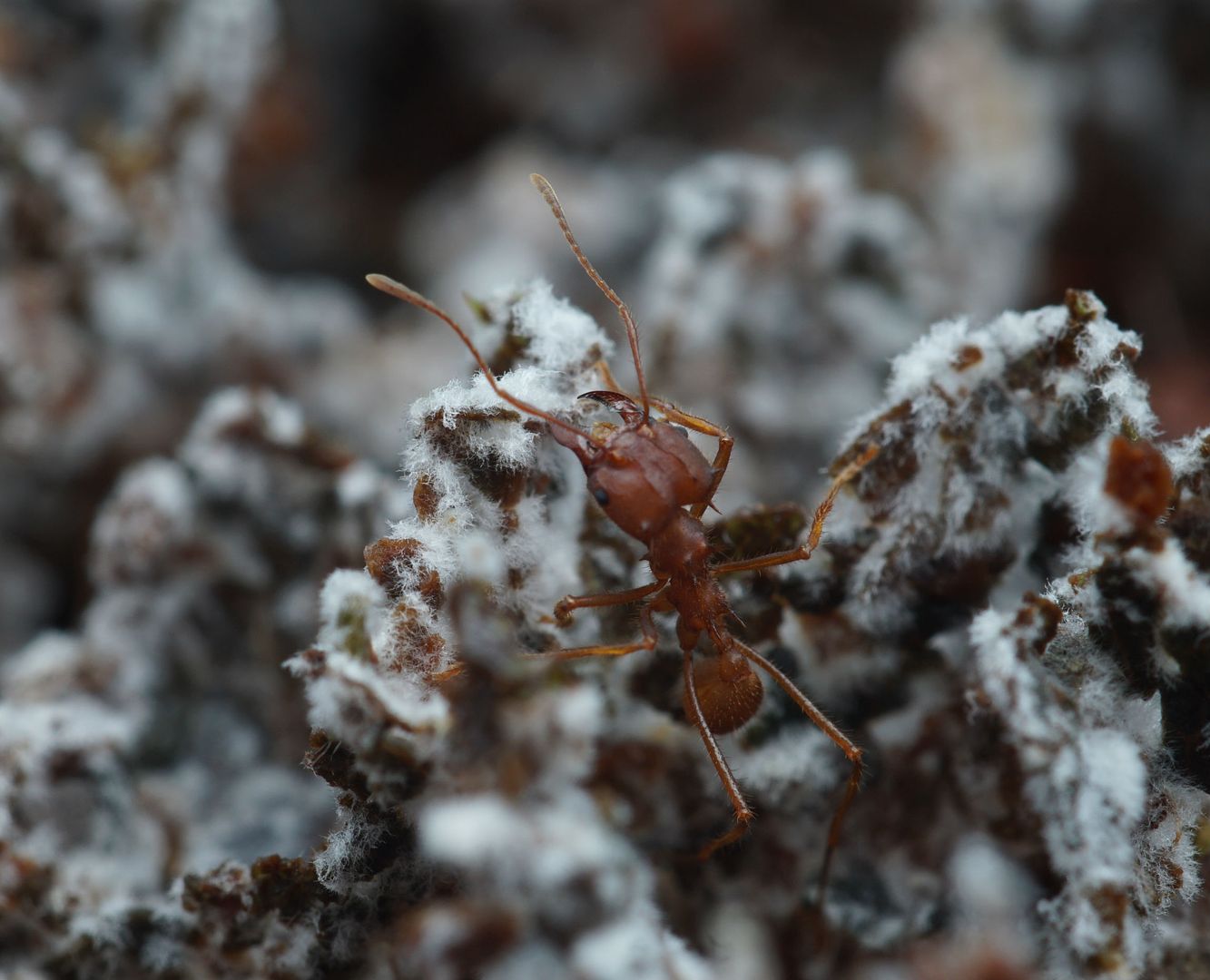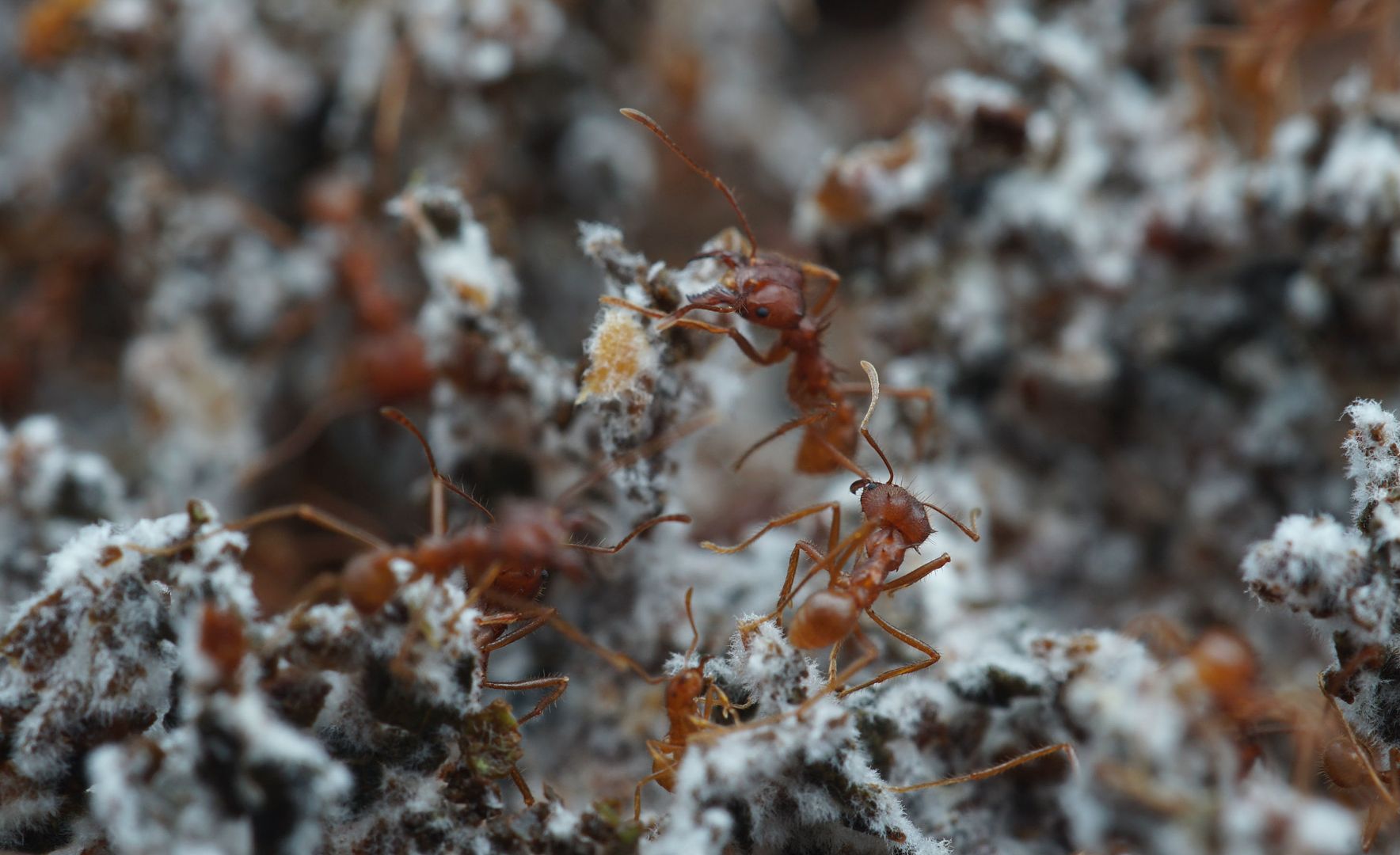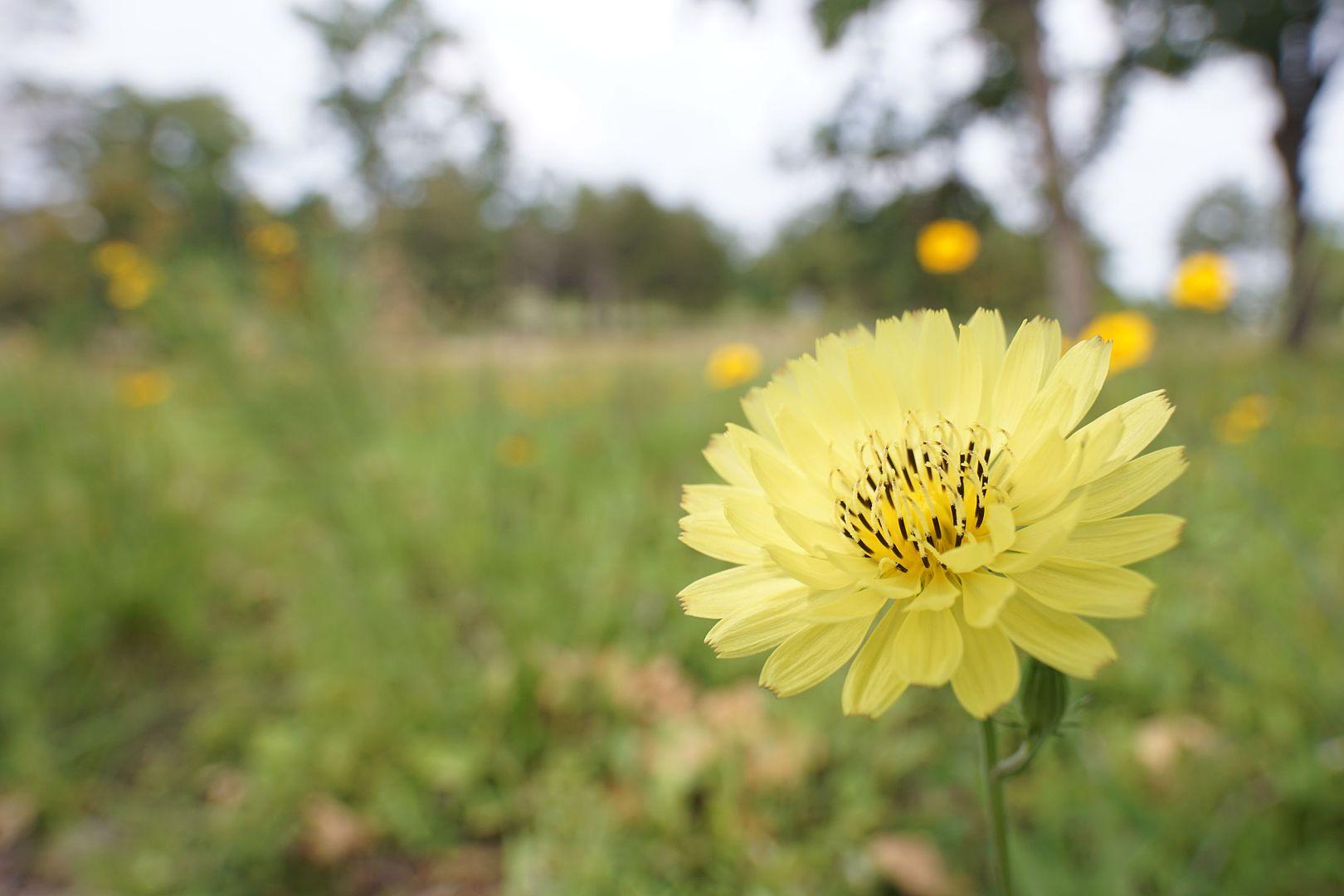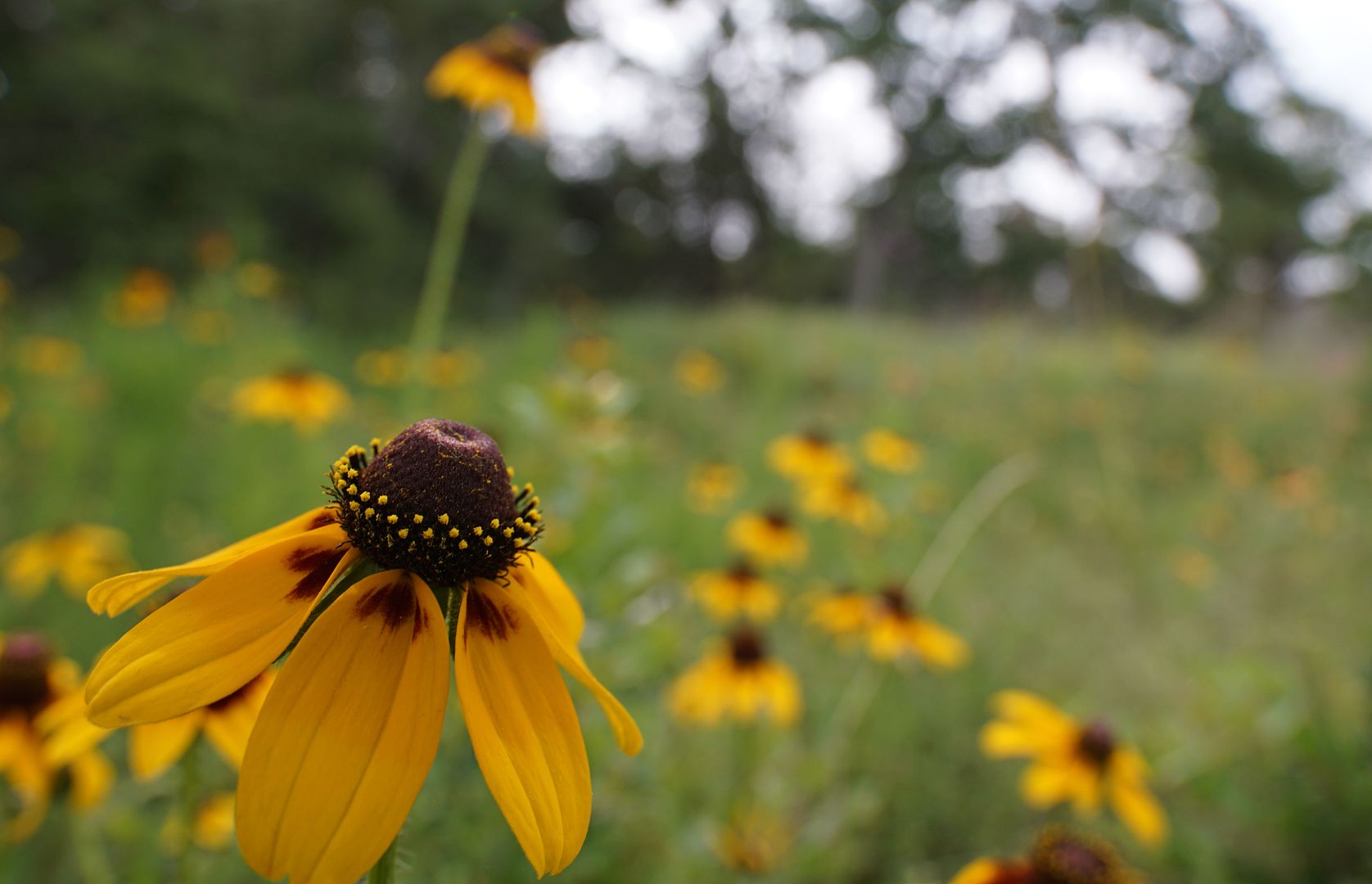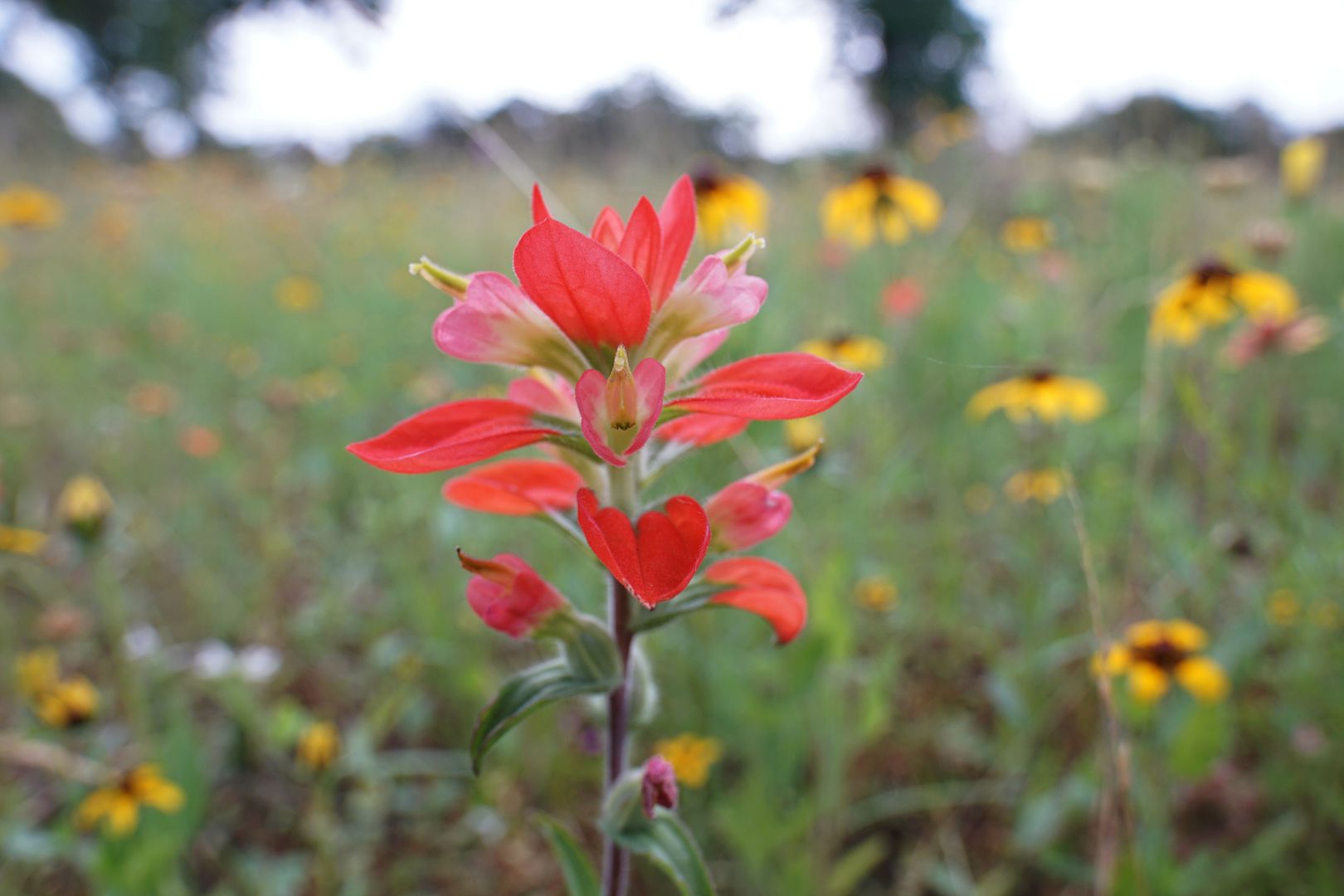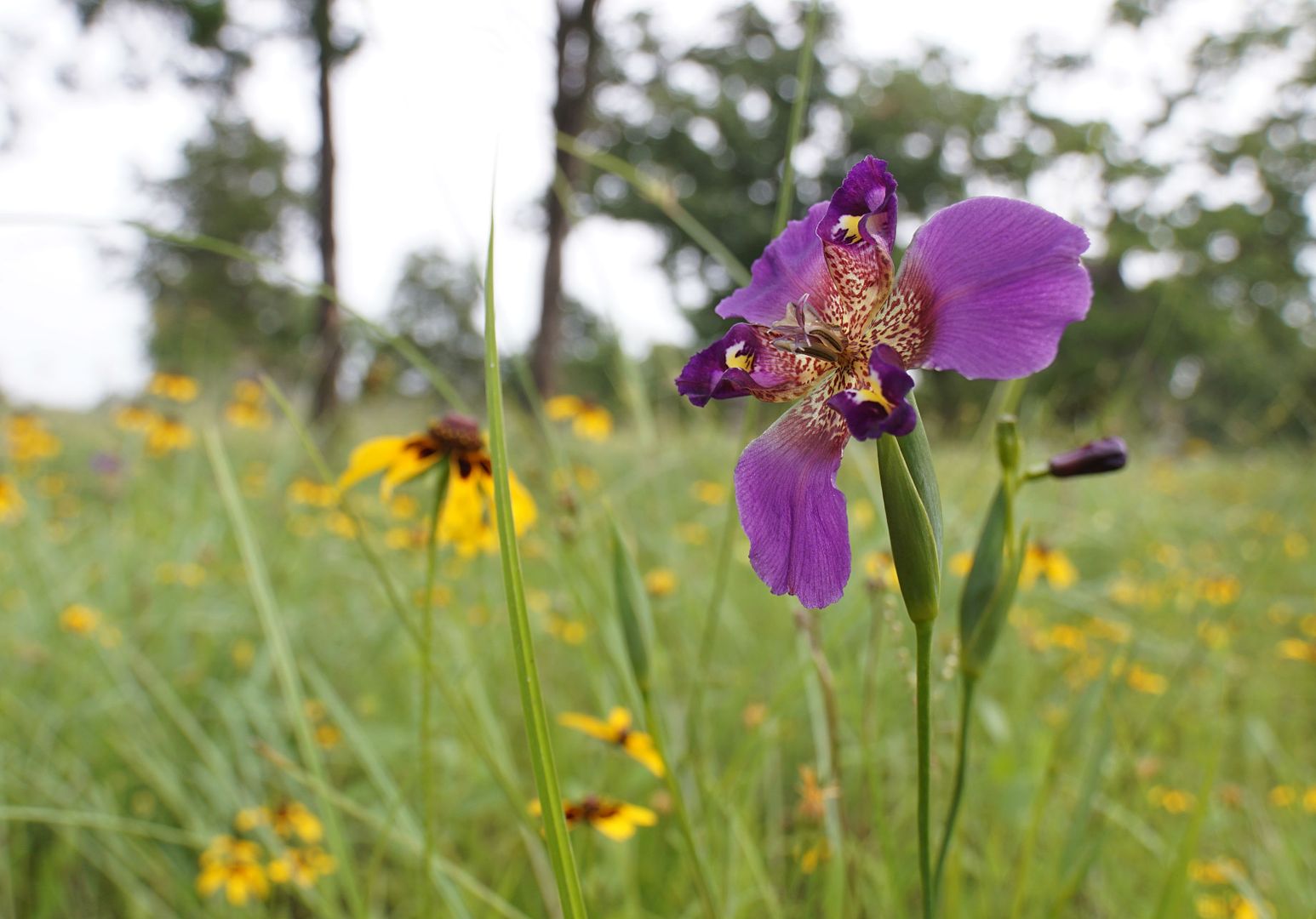For personal reasons this year I decided not to have an official "Ant Together." The short story is that my grandfather unexpectedly passed away during the peak month that we would have had one. I found myself in this odd state of mine where I just wanted to skip everything required of me and not volunteer for certain family obligations... thus it stood to reason that I shouldn't be doing other things either such as holding events.
Though the truth is as much as I like to promote the New Jersey Ant Together as a big annual thing, it's never escaped being a simple hiking trip with like minded individuals. And maybe it should stay as a simple get together in future.
I did manage to get a trip in thanks to my friend Matt coming back for a visit. He's attended every Ant Together I've ever done so it was good to get some in while he was back home. Our hunting ground of choice was the Rancocas Nature Center where we held our first one.
This was not our most productive trip, mostly owing to the fact that I forgot my shovel (Doh!), but we still had fun. Our first visit there five years ago we had come across colonies of Polyergus, Stigmatomma, and Strumigenys which was pretty good for our first time! Polyergus are specialist slave making ants of the common Formica genus, that are only found in certain fields. Stigmatomma are a type of "Dracula Ant" which specializes on hunting down centipedes for food. The term Dracula Ant comes from their habit of feeding on their own larva through non-lethal cutting. Strumigenys are cryptic, often hard to find, specialist on soft bodied arthropods... basically miniature Trap-Jaw Ants. None of which we found on our trip owing to the fact that it was very late in the summer.
Formica incerta, very similar looking to Formica pallidefulva, differing primarily by the amount of facial hair. The two species often live in the same fields together and prefer not so lush lawn or scrub habitats. Colonies tend to be small typically around 2,000 to 10,000 ants. Queen number varies with these two species, I believe because some colonies are in the habit of allowing new queens to return to the nest after mating. The colonies then divide after that. It's likely this behavior came about from the presence of other slave making Formica and Polyergus species, perhaps even becoming more common when these threats are around.
Camponotus pennsylvanicus The Eastern Black Carpenter Ant, is easily identified by its large size, ~8 to 15mm. They are solid black color in color, though sometimes the legs with hue dark brown or red, more so in queens than workers. Also they have large amounts of hair on the gaster (abdomen), that's usually brown or gray in color. Colonies are strictly Monogyne/Oligegyne where they only tolerate one queen at a time; the Oligegyne comes from the fact that occasionally colonies have two egg laying queens in them... this is a temporary situation at best and likely comes from a situation where a new queen was brought back into the nest on accident. The new queen is "safe" as long as she's not in the same satellite nest as the mother queen of the colony. These situations usually resolve themselves each winter when colonies reduce the number of satellite nests retreating into one or two locations.
Crematogaster cf. cerasi. This likely is Crematogaster cerasi from their habit of sometimes building shed-like structures over the aphids and leaf hoppers they tend. Crematogaster species otherwise tend to be difficult to identify because of how similar most of them look and needing to count the number of hairs on parts of the body from multiple workers to get a range. This colony likely only has one queen but grows to be enormous in size. Locally they're known for having extensive foraging trails and satellite nests established basically in any dead wood structure or hollow cavity they can find. Despite this they're not really a structural pest.
The genus Crematogaster is easily identified because their waste segment connects to the upper half of the gaster, where as every other ant genus in the world connects to the lower half, or to both with a wide surface area. Their gaster is also considered "heart-shaped." The reason for this upper connection to the gaster is so they can more easily flick venom onto enemies or "sting" venom in an overhead like action as a scorpion would go to sting. Their stinger is said to be soft and flexible, like a hair so really they're not so much injecting venom as painting it on.
Aphaenogaster is a true genus of scavengers in the forests of the North East. Now that it's late summer the Dog Days Cicada's are dropping like flies and the ants are cashing in. It's been said that ants keep the forest floor clear of dead insects and it's uncommon for a carcass to go more than 5 minutes without being discovered by an ant.
Discovery is one thing though. Dismantling and hauling it away might take a day or two. These were ripping at the soft parts first and eventually managed to remove the legs. I did not stay to watch anything more.
While we didn't come across any slave making Polyergus, we did chance upon a colony of slave making Formica. This is either Formica pergandei or rubicunda. I didn't collect any specimens, so we'll likely never know what they are unless I go back sometime. This doesn't matter much though as both species tend to live exactly the same way. F. pergandei has 1 - 4 hairs under the head, while F. rubicunda always has 4. F. rubicunda is also more in the habit of having dark patches on the head and thorax. There are other slight differences but this is the kind of stuff that taxonomists nit pick about for hard identifications.
This is a good photo of the waste segment, looking head on, which is the light orange heart-shaped part before the black gaster. But this is also a bad photo of the "clypeal notch" which is the front section on the head between the mandibles. Trust me there is a notch there; it's visible in other photos I took of these ants. Unfortunately none of these were good enough photos I felt worth uploading and showing. I mention the notch because Formica is the largest ant genus in North America and it's the defining characteristic that narrows it down to those two species.
Members of the Sanguinae
group of Formica HAVE to have host ants within the colony to do the
work for them. They are obligated slave makers. Other species of Formica
found in the Exsecta, Rufa, and Microgyna groups might use host
colonies to found new nests, but after that host species are no longer
needed. In fact the Formica exesectoides mounds we like to visit
in Turkey Swamp Park rarely use host species. They've move beyond the
need for them, allowing new queens from their own colony back into the
nest to form a massive super colony within the forest.
These do require slaves though and we chanced upon, I believe starting out on a raid.
They would pull up individuals of their own species out of the nest and then began running along a trail to a host colony I believe to be either Formica fusca or subsericea. They would then run into the nest, grab a cocoon of one of their hosts and bring it back. None of which I got any good photos of :(
Tuesday, September 20, 2016
Saturday, September 17, 2016
Late Summer Mt. Cuba Center Visit
I was at the Mt. Cuba Center last weekend for a little late summer photo stroll. Here are a few of the sights I saw.
The round garden perhaps off from the main house is a dazzling array of color now, though perhaps a little busy for some. While it's comprised of mostly nonnative annuals, it serves as a bustling stop for an assortment of butterflies who's host plants are all around some ~650 acres of fairly well kept wilderness and native plant gardens.
I'm not sure what the purple plant is but it's foliage contrasts well with the brightness of the Lantana in bloom among other flowering plants. Here some skippers flutter about. Among them were an assortment of Swallowtails, Monarchs, and Fritillary Butterflies that proved too quick for me to photograph.
Elsewhere in a native flower bed the Swallowtails were a bit more cooperative. Here two Tigers sip at an Ironweed, I believe the cultivar is Vernonia angustifolia 'Plum Peachy' which is like 'Iron Butterfly' but about twice as tall.
Praying Mantises were abound in the meadow garden. Not only were females laying eggs but also in the act of mating... some with more than one partner courting them at the same time.
Though the woodland was filled with an assortment of Woodland Asters, I found the Richweed, Collinsonia canadensis, to be particularly interesting.
Though common in woodland areas across the eastern United States, it's not something a lot of people stop to look at.
Part of the issues that it's not a more mainstream plant is likely due to the large leaves of the plant, compared to the fairly delicate flower stalks that come above. The flowers are small and not entirely noticeable either. I actually walked past the patch of these plants twice before I even noticed it. It's plants like this where interesting leaves or flower shapes from cultivation would benefit to get it sold and brought into the main nursery trade.
The round garden perhaps off from the main house is a dazzling array of color now, though perhaps a little busy for some. While it's comprised of mostly nonnative annuals, it serves as a bustling stop for an assortment of butterflies who's host plants are all around some ~650 acres of fairly well kept wilderness and native plant gardens.
I'm not sure what the purple plant is but it's foliage contrasts well with the brightness of the Lantana in bloom among other flowering plants. Here some skippers flutter about. Among them were an assortment of Swallowtails, Monarchs, and Fritillary Butterflies that proved too quick for me to photograph.
Elsewhere in a native flower bed the Swallowtails were a bit more cooperative. Here two Tigers sip at an Ironweed, I believe the cultivar is Vernonia angustifolia 'Plum Peachy' which is like 'Iron Butterfly' but about twice as tall.
Praying Mantises were abound in the meadow garden. Not only were females laying eggs but also in the act of mating... some with more than one partner courting them at the same time.
Though the woodland was filled with an assortment of Woodland Asters, I found the Richweed, Collinsonia canadensis, to be particularly interesting.
Though common in woodland areas across the eastern United States, it's not something a lot of people stop to look at.
Part of the issues that it's not a more mainstream plant is likely due to the large leaves of the plant, compared to the fairly delicate flower stalks that come above. The flowers are small and not entirely noticeable either. I actually walked past the patch of these plants twice before I even noticed it. It's plants like this where interesting leaves or flower shapes from cultivation would benefit to get it sold and brought into the main nursery trade.
Saturday, July 30, 2016
Some Uncommon Ants In My Yard
While trying to photograph Aphaenogaster dispersing Trillium seeds I chanced upon a few unexpected surprises. The only colony I was able to find actively foraging happened to be in an old stump, a former Norway Maple we had had cut down many years ago. To set the scene properly this was in the shade of an Eastern Redbud Tree and the stump is now used as a perch for a Mason Bee box as well as a stone dish we use as a bird's bath. Naturally we flush out the water every day or so to keep the mosquito larva down and the stump has been getting soaked for many years. The result seems to be idea for a surprising amount of ant diversity.
The stump is absolutely teaming with decomposing arthropods. Here an Acorn Ant, Temnothorax curvispinosus, has found one. Small soft bodied creatures such as this, especially ones smaller than the ants themselves make excellent ant food. It's likely several colonies of Acorn Ants are also nesting within the log.
Here a Strumigenys pergandei has also caught something, I believe it's a spring tail. These ants are rarely seen because the only nest in shaded places that are "cold and damp." Cold refers to when they nest in soil, usually under a rotting log. Generally the soil will be cool to the touch, even in summer. They hunt and forage in rotting wood and leaf litter, often where decomposing insects and arthropods are abundant enough to have turned much of the dead plant matter into soil. Supposedly the yellowish structure on their waist segments, as well as the petal-like structures on their head and body are to help camouflage them from prey items.
This is an awful shot of a Proceratium silaceum but they were there too. Even more cryptic than Pyramica, they have a front facing stinger on the end of their gaster (abdomen) so they can sting prey that's in front of them, in tight closed spaces, as opposed to having to turn around. They're worth a google image search to get the idea.
It's nice knowing these uncommon ants can still be found in my yard, because this is the first time in several years that I've seen either in my yard. Now I know where to look!
The stump is absolutely teaming with decomposing arthropods. Here an Acorn Ant, Temnothorax curvispinosus, has found one. Small soft bodied creatures such as this, especially ones smaller than the ants themselves make excellent ant food. It's likely several colonies of Acorn Ants are also nesting within the log.
Here a Strumigenys pergandei has also caught something, I believe it's a spring tail. These ants are rarely seen because the only nest in shaded places that are "cold and damp." Cold refers to when they nest in soil, usually under a rotting log. Generally the soil will be cool to the touch, even in summer. They hunt and forage in rotting wood and leaf litter, often where decomposing insects and arthropods are abundant enough to have turned much of the dead plant matter into soil. Supposedly the yellowish structure on their waist segments, as well as the petal-like structures on their head and body are to help camouflage them from prey items.
This is an awful shot of a Proceratium silaceum but they were there too. Even more cryptic than Pyramica, they have a front facing stinger on the end of their gaster (abdomen) so they can sting prey that's in front of them, in tight closed spaces, as opposed to having to turn around. They're worth a google image search to get the idea.
It's nice knowing these uncommon ants can still be found in my yard, because this is the first time in several years that I've seen either in my yard. Now I know where to look!
Wednesday, July 20, 2016
Myrmecochory: Ant Plant Seed Dispersal
It's that time of the year again. This is probably my favorite part about native plant gardening because it combines so many of our loved spring ephemerals with ants.
Ants are largely overlooked by gardeners despite being the most common insect (by number). Part of the reason gardeners don't appreciate ants is likely because they are generalist foragers. So it doesn't matter a whole lot what plants are growing in a garden, native or non; if you have soil and dead wood, chances are ants live in your yard.
They play a vital role in removing dead insects. So after those big pretty swallowtail butterflies are done laying their eggs and visiting the flowers in your garden, ants are more than happy to collect, dissect, and consume their expired carcass. Though on the other hand, ants are also happy to remove butterfly eggs from host plants and often kill early instars to a lot of species. Ants don't forage equally on certain plants though, so it can depend on what's nesting near the tree/plant. Many caterpillars have defenses against ants too, but they're not always effective.
I have a Hackberry sapling that's about as tall as me right now. My dream is to someday see some Hackberry Emperors using it as a host plant. Every year though I got out there and find ants (Lasius alienus, Camponotus pennsylvanicus, C. chromaiodes, C. nearcticus, C. subarbatus, Temnothorax curvispinosus and Nylanderia faisonensis) foraging on the tree. They're mostly doing what's called nectar scraping where they wonder the plant licking and scraping the surface of the leaves to collect the small amounts of sweet sap that bleeds out of the leaves with the changing temperature of the day. The foraging power of 1 ant colony is enough to put a dent in the number of Lepidoptera eggs on a sapling; this one has 7 different species and likely multiple colonies of each constantly foraging on it, so I won't likely be seeing any Hackberry Emperors for several years.
To a lesser degree, ants also think pollinators are delicious. They're mostly an issue with solitary bees, usually ground nesting or mason bee nests when discovered by ants. Ants typically don't dig into structures in search of food though, so as long as the burrows or tubes are properly secured with mud the developing bee larva should be safe.
My favorite thing ants do in the garden is called Myrmecochory, or ant plant seed dispersal. Even here though ants can be considered annoying. Let's say you paid $20 for a rare Trillium species, looking to start a clump of them over the next decade, which is how long many Trilliums take to flower from seed. Often though Trillium seeds have the annoying habit of walking away from the plant thanks to packets of "Elaiosome," a lipid rich substance on the seed, attracting ants to come and carry them home.
This is Trillium vaseyi, (I believe), which is pollinated by Vinegar Flies and other sorts of carrion insects. Note Vinegar Flies are sold in pet stores as "Fruit Flies" because that sounds better than Vinegar Flies. True Fruit Flies consume fresh fruit and tune delicious apples and berries into balls of maggots. Vinegar Flies target foods that have already spoiled, drawn in by the fermenting smell of yest, cider and dead fish, which is what this flower smell like.
Lots of Trilliums are either pollinated by carrion insects or bees. In my garden this particular Trillium species isn't quite ready to produce seeds yet, though they flower every year. A rabbit or some other critter trampled through the Trillium garden and snapped the stems to the two plants of this species so I've yet to get photograph them. Fortunately I have 8 other Trillium species in my garden!
Trillium grandiflorum! This is by far the most common and easily recognized Trillium species. It's pollinated by bees and while I never witnessed any bees visiting my flowers I have seen honeybees visiting them in other gardens when planted in sufficient numbers. I'm certain Bumblebees and others must visit them on occasion too. Currently I have a clump of about 9 plants of flowering age. Each of which has a few off shoots underneath that will reach flowering age in years to come. I may even need to divide a few in a year or two.
Admittedly things like Twinleaf, Violets, Blood Root, Hepatica, Woodland Poppy, and Bleeding Hearts have already dropped their seeds for ants to disperse. Trilliums are latest ephemeral plant in North America to drop their seeds as many of the ones I've mentioned are already dormant.
Note how the leaves to the plants photoed above are singed at the tips. If you don't water your plants, they will fry right up and abort the seedpod entirely. You can plant Trilliums in full sun and they'll grow happily but probably won't produce seeds because of how much sun they get. You can compensate for this by adding water but there's only so much watering can do. It's best to plant them in the shade with a small amount of mulch and a low ground cover growing underneath such as Hepatica or Stone Crop. I like to water the roots to mine basically every time I walk past with the hose, or once every other day. Just put the water to the stem and count to 10 for each plant. Even doing this though won't guarantee success. Note the plant to the left didn't bother producing a seedpod at all. Of 9 plants only 2 didn't make seedpods, lack of pollination is likely the issue. Some that did make seedpods made smaller than average ones.
You can tell a Trillium pod is ripe when you can see the seeds right through the pod. Another thing to look for is a change in color. Some go from green to purple, others go from purple to green, some ends up as bright red, depending on the species. Seeing these changes, and especially seeing the seeds within, mean you're within 2 weeks of the seeds being ripe. Seeds should be hard, like unpopped popcorn. The longer you wait the more likely the pod will become damaged, where ants, wasps, birds, and rodents will make off with the seeds. I've found seedpods completely hollow inside thanks to a small puncture hole allowing ants to gain entry.
Ants planting the seeds is not necessary for germination! This is just how the plants disperse their seeds in the wild. For gardeners looking to start a bed of these, I'd say go ahead and crack open a pod or two and just dump the seeds out in a shallow ditch and plant them yourself. Ideally the elaiosome should be removed before doing this, however that stuff is really effing on there!!! You can't just cut it off or take your finger nail to it. The risk is sometimes a kind of mold or fungus grows on the elaiosome and may kill the seed... I've never seen this happen to an extreme degree though. Maybe let the seeds dry out for two hours before planting.
Personally I like letting the ants carry the seeds off. The consequence here is that I get Trillium seedlings coming up in the lawn and in unwanted places. These are easy enough to transplant when I notice them, but determining what species they are can't be done for many more years!
Shortly after a pod has become damaged, ants will more than likely find the seeds. Here a pavement ant, Tetramorium caespitum, has chanced upon the mother load.
Because dirt doesn't make for a thrilling background, I took the liberty of placing a seedpod on one of the stepping stones of my garden.
Nylanderia faisonensis is a nonnative woodland species that's slowly been invading areas rich in leaf litter. Nylanderia is a genus of tramp ants which are accidentally imported all over the world. Not all ants are ideal at planting seeds, and this is one of them. The ants are too small to carry the seeds anywhere, so instead of dispersing them as the plant wanted, the ants simply feed on the elaiosome where they found the seed.
Tetramorium caespitum, Pavement Ants, do a better job but also are not native. Studies have been coming out finding that Nonnative Ants tend to favor the seeds to Nonnative Plants. In this case the Tetramorium were more than happy to disperse these seeds for me. (My yard also lacks any nonnative plant that has elaiosome on the seeds.)
Another risk facing Trillium seeds is the ants eating the seed along with the elaiosome. Trillium seeds tend to be rock hard for the first two years then soften up as they go to germinate. They are said to produce a fowl smell which is probably meant to encourage ants to move their nest elsewhere!
The ideal ant genus to be doing this seems to be Aphaenogaster which form abundant colonies of ~2000 ants throughout woodland settings. They're also very much in the habit of changing their nest location, so as the colonies move around they leave seed banks behind where plants like Trilliums tend to grow. There used to be a colony of Aphaenogaster rudis under this stepping stone which is why I picked it, sadly it seems the colony has moved on.
Two Pavement Ants trying to carry a Trillium seed home.
These ants are just big enough to handle the seed, though it still takes two of them to move it. Sometimes ants will actually give up after carrying the seeds a few feet. The seed is still dispersed from the parent plant but slightly at risk of being eaten by a rodent. Trilliums naturally grow best where there is plenty of leaf litter decomposing, and it's likely in these kinds of settings such discarded seeds are still successful.
I love this shot.
The larger, ground nesting, Camponotus castaneus does a great job of dispersing seeds too. In the past I had assumed the seeds might get lost 4' underground where these ants like to nest. As it turns out though after bringing the seeds home, they're discarded a short while later, once the elaiosome has dried up typically. While the seeds may not be planted, they are dispersed and left in the colony midden pile (trash heap) which is still better than nothing.
These are one of the most elegant ants in my opinion and I love their chestnut brown and orange color tone.
Ants are largely overlooked by gardeners despite being the most common insect (by number). Part of the reason gardeners don't appreciate ants is likely because they are generalist foragers. So it doesn't matter a whole lot what plants are growing in a garden, native or non; if you have soil and dead wood, chances are ants live in your yard.
They play a vital role in removing dead insects. So after those big pretty swallowtail butterflies are done laying their eggs and visiting the flowers in your garden, ants are more than happy to collect, dissect, and consume their expired carcass. Though on the other hand, ants are also happy to remove butterfly eggs from host plants and often kill early instars to a lot of species. Ants don't forage equally on certain plants though, so it can depend on what's nesting near the tree/plant. Many caterpillars have defenses against ants too, but they're not always effective.
I have a Hackberry sapling that's about as tall as me right now. My dream is to someday see some Hackberry Emperors using it as a host plant. Every year though I got out there and find ants (Lasius alienus, Camponotus pennsylvanicus, C. chromaiodes, C. nearcticus, C. subarbatus, Temnothorax curvispinosus and Nylanderia faisonensis) foraging on the tree. They're mostly doing what's called nectar scraping where they wonder the plant licking and scraping the surface of the leaves to collect the small amounts of sweet sap that bleeds out of the leaves with the changing temperature of the day. The foraging power of 1 ant colony is enough to put a dent in the number of Lepidoptera eggs on a sapling; this one has 7 different species and likely multiple colonies of each constantly foraging on it, so I won't likely be seeing any Hackberry Emperors for several years.
To a lesser degree, ants also think pollinators are delicious. They're mostly an issue with solitary bees, usually ground nesting or mason bee nests when discovered by ants. Ants typically don't dig into structures in search of food though, so as long as the burrows or tubes are properly secured with mud the developing bee larva should be safe.
My favorite thing ants do in the garden is called Myrmecochory, or ant plant seed dispersal. Even here though ants can be considered annoying. Let's say you paid $20 for a rare Trillium species, looking to start a clump of them over the next decade, which is how long many Trilliums take to flower from seed. Often though Trillium seeds have the annoying habit of walking away from the plant thanks to packets of "Elaiosome," a lipid rich substance on the seed, attracting ants to come and carry them home.
This is Trillium vaseyi, (I believe), which is pollinated by Vinegar Flies and other sorts of carrion insects. Note Vinegar Flies are sold in pet stores as "Fruit Flies" because that sounds better than Vinegar Flies. True Fruit Flies consume fresh fruit and tune delicious apples and berries into balls of maggots. Vinegar Flies target foods that have already spoiled, drawn in by the fermenting smell of yest, cider and dead fish, which is what this flower smell like.
Trillium grandiflorum! This is by far the most common and easily recognized Trillium species. It's pollinated by bees and while I never witnessed any bees visiting my flowers I have seen honeybees visiting them in other gardens when planted in sufficient numbers. I'm certain Bumblebees and others must visit them on occasion too. Currently I have a clump of about 9 plants of flowering age. Each of which has a few off shoots underneath that will reach flowering age in years to come. I may even need to divide a few in a year or two.
Admittedly things like Twinleaf, Violets, Blood Root, Hepatica, Woodland Poppy, and Bleeding Hearts have already dropped their seeds for ants to disperse. Trilliums are latest ephemeral plant in North America to drop their seeds as many of the ones I've mentioned are already dormant.
Note how the leaves to the plants photoed above are singed at the tips. If you don't water your plants, they will fry right up and abort the seedpod entirely. You can plant Trilliums in full sun and they'll grow happily but probably won't produce seeds because of how much sun they get. You can compensate for this by adding water but there's only so much watering can do. It's best to plant them in the shade with a small amount of mulch and a low ground cover growing underneath such as Hepatica or Stone Crop. I like to water the roots to mine basically every time I walk past with the hose, or once every other day. Just put the water to the stem and count to 10 for each plant. Even doing this though won't guarantee success. Note the plant to the left didn't bother producing a seedpod at all. Of 9 plants only 2 didn't make seedpods, lack of pollination is likely the issue. Some that did make seedpods made smaller than average ones.
You can tell a Trillium pod is ripe when you can see the seeds right through the pod. Another thing to look for is a change in color. Some go from green to purple, others go from purple to green, some ends up as bright red, depending on the species. Seeing these changes, and especially seeing the seeds within, mean you're within 2 weeks of the seeds being ripe. Seeds should be hard, like unpopped popcorn. The longer you wait the more likely the pod will become damaged, where ants, wasps, birds, and rodents will make off with the seeds. I've found seedpods completely hollow inside thanks to a small puncture hole allowing ants to gain entry.
Ants planting the seeds is not necessary for germination! This is just how the plants disperse their seeds in the wild. For gardeners looking to start a bed of these, I'd say go ahead and crack open a pod or two and just dump the seeds out in a shallow ditch and plant them yourself. Ideally the elaiosome should be removed before doing this, however that stuff is really effing on there!!! You can't just cut it off or take your finger nail to it. The risk is sometimes a kind of mold or fungus grows on the elaiosome and may kill the seed... I've never seen this happen to an extreme degree though. Maybe let the seeds dry out for two hours before planting.
Personally I like letting the ants carry the seeds off. The consequence here is that I get Trillium seedlings coming up in the lawn and in unwanted places. These are easy enough to transplant when I notice them, but determining what species they are can't be done for many more years!
Because dirt doesn't make for a thrilling background, I took the liberty of placing a seedpod on one of the stepping stones of my garden.
Nylanderia faisonensis is a nonnative woodland species that's slowly been invading areas rich in leaf litter. Nylanderia is a genus of tramp ants which are accidentally imported all over the world. Not all ants are ideal at planting seeds, and this is one of them. The ants are too small to carry the seeds anywhere, so instead of dispersing them as the plant wanted, the ants simply feed on the elaiosome where they found the seed.
Tetramorium caespitum, Pavement Ants, do a better job but also are not native. Studies have been coming out finding that Nonnative Ants tend to favor the seeds to Nonnative Plants. In this case the Tetramorium were more than happy to disperse these seeds for me. (My yard also lacks any nonnative plant that has elaiosome on the seeds.)
Another risk facing Trillium seeds is the ants eating the seed along with the elaiosome. Trillium seeds tend to be rock hard for the first two years then soften up as they go to germinate. They are said to produce a fowl smell which is probably meant to encourage ants to move their nest elsewhere!
The ideal ant genus to be doing this seems to be Aphaenogaster which form abundant colonies of ~2000 ants throughout woodland settings. They're also very much in the habit of changing their nest location, so as the colonies move around they leave seed banks behind where plants like Trilliums tend to grow. There used to be a colony of Aphaenogaster rudis under this stepping stone which is why I picked it, sadly it seems the colony has moved on.
Two Pavement Ants trying to carry a Trillium seed home.
These ants are just big enough to handle the seed, though it still takes two of them to move it. Sometimes ants will actually give up after carrying the seeds a few feet. The seed is still dispersed from the parent plant but slightly at risk of being eaten by a rodent. Trilliums naturally grow best where there is plenty of leaf litter decomposing, and it's likely in these kinds of settings such discarded seeds are still successful.
I love this shot.
The larger, ground nesting, Camponotus castaneus does a great job of dispersing seeds too. In the past I had assumed the seeds might get lost 4' underground where these ants like to nest. As it turns out though after bringing the seeds home, they're discarded a short while later, once the elaiosome has dried up typically. While the seeds may not be planted, they are dispersed and left in the colony midden pile (trash heap) which is still better than nothing.
These are one of the most elegant ants in my opinion and I love their chestnut brown and orange color tone.
Thursday, June 23, 2016
I Bug Shotted!
Bug Shot 2016 in Austin was a three and a half day course that took place at McKinney Roughs Nature Park. The course itself was really good and pretty well put together. It was organized, well put together, and you got time with each of the three main instructors. Everyone was knowledgeable on the topic and I learned a hell of a lot almost to an intimidating degree. Testimony from a few of the regulars who show up to these courses believe that this is one of the best insect photography classes out there.
Apparently there's been a need for a course like this for quite some time. Most photography workshops that deal with macro have people shooting things like coins and flowers, which are nice and I'm sure there's a market for, but few focused on just shooting insects. And what's more the few workshops that do focus on insects, aren't necessarily being taught by an entomologist. Some of the regulars who have been attending Bug Shot since it began 5 years ago, tell stories about courses where they were just in an annex room to some hotel and watched a man take pictures for a few hours with no hands on training what so ever. So Bug Shot is a great value for your money.
McKinney Roughs served as a wonderful biodiverse hot spot for our photographing needs. The buildings are landscaped with mostly native flora that drew in things like stick insects, black swallowtails, fire ants, and a whole host of spiders, dragonflies, bees, etc... They also have several patches of wildflower meadows setup which were teaming with other lovelies a lot of which were things rarely photographed, such as blind snakes, and a particularly fun lichen orb weaver.
Shots in the Field
Solenopsis invicta, the red imported fire ant, was having a nuptial flights when I arrived the first day. I could have come collected several dozen queens of this species without even looking for them. That's about how many new founding queens of this invasive species I noticed over the weekend just walking on the ground. Had I started lifting rocks and dug up small holes I'd have likely found hundreds more.
One of our first tasks was to go about and take photos of insects out in fields. We were also handed collection tubes for temporary captivity; things we wanted to photograph in light boxes later on. Here were some young assassin insects on a thistle plant.
Some type of fly on a Black Eyed Susan. I noticed the dark patched form of Black Eyed Susan was more common down there than the solid yellow kind we have in NJ.
What I believe to be a Swift Moth, though I can't seem to match the vane coloration to any species.
A Lynx Spider consuming two flies.
The obligatory Jumping Spider which all Macro Photographers have to photograph at one point or another.
An Argiope Spider. I'm not sure which one as they all seem to be colored fairly similarly and change pattern a bit as they grow in size. It's a neat species because they build this solid thatching at the center of their webs so if a bird were to come along they simply crawl onto the other side of it to hide.
Nothing tests out a wrist heart monitor quite like having a Lichen Orb Weaver running up your arm. We were fortunate enough to have an experienced spider wrangler in the group. I had no idea spiders could preform tricks!
First he made sure the spider was fair tempered. Sometimes they're more than happy to bite at will though this one was very well behaved, though it never stood still long enough to photograph well! Basically the moment they're out of their container they want to build an 10' tall web... on your hand. So they attach a line to your fingers a few feet and let out a second line. If the second line attaches onto something, they will crawl over to it and start building their web, but if it doesn't then they'll climb back up to your hand, kind of like a yoyo.
I noticed the Honeybees favored two wildflowers down there. Namely Horsemint, which did a good job of smearing pollen on their backs.
And a new plant to me called Red Yucca, or Red False Yucca as it's not technically a true Yucca. It's a type of grass that produces a very tall arching cane of soft red flowers.
Light Box Outdoor
One of the workshops focused on using a light box outdoors. I provided a stick insect I caught for us all to photograph. While it made for a steady subject, the photos were lacking compared to some of the others bugs used, sadly. Another group had a Mantid Lacewing which seemed to be quite the performer. A day or two into the course I was starting to feel epileptic and had to med up and go to bed early. This was likely brought on by 4 hours of staring at a flash bulb go off in a light box the night before.
Beside us on a pick nick table was some type of spider which had the spider people gushing... not being a spider person myself I have no idea what it is or the significance of it.
Actually that was kind of a problem the whole trip. I was the only ant guy there aside from Alex Wild, while most of the other students were general entomology majors. So I learned what it's like to be in a room full of people spouting Greek and Latin names and having no idea what they were talking about. At one point someone came in the room shouting, "Agkistrodon contortrix! Agkistrodon contortrix!" or as it's otherwise better known, A Copperhead Snake! which would have been beneficial to know before I started running out along a dark trail to find out what a Agkistrodon contortrix was. (There were people already there with flash lights pointed at it but you get my point.)
Black Lighting at Night
Each night, they setup special lights to attract insects onto a sheet. These weren't black lights, rather some other kind of light that I found completely irritating to look at, and didn't help at all with the way I was feeling the whole weekend. I pulled through though and got some of the best shots form my trip.
Hieroglyphic Cicada
Maple Spanworm
Light Box
They showed us how to photograph things in a light box and explained the benefits of this. Here a leaf cutter ant, Atta texana, workers can be seen in full detail. It was taken in a white box with two flashes illuminating the whole area evenly with light. There's also the "Know Your Neighbor's" method which has one of the flashes under the subject as it walks on a fogged pain of glass or plastic. This removes the under shadow and can makes wings appear differently in photos. The benefit here is you only get the insect itself and magazine writers like these kinds of photos because they can just put the text right around the subject with ease.
I finally know the pain that Alex Wild (an ant photographer) goes through to get some of his shots. I have about 400 shots of this walking in circles, seemingly drunk, and almost none of them are in focus, centered right, or even have the ant in frame!
This is a queen to this species, Atta texana. She measures 3cm long! making this the largest ant in America, putting Camponotus pennsylvanicus to shame!
Alex brought along his laboratory colony for us to photograph. Being an ant guy I'd have loved to take this thing home with me, but they'd be harder to keep alive over the winter where I am.
Atta texana specializes on plants in the Rose/Apple family... so basically all fruit trees and roses, making this a huge agricultural pest, though there are plenty of plants in this family that occur in the wild.
Wild Flowers
Texas Dandelion I'm told is treated just like our regular Dandelion, a weed. However something about the pale yellow flower, wider petals, and taller, more erect stance of the stem makes me want to grow it.
Black Eyed Susans were abundant in the meadows.
Blanket Flower, though not the most robust specimen. Actually I believe this is the annual species. There's also a biannual which is more commonly sold in the nursery trade.
Indian Paint Brush, which is a parasitic plant on native grasses. The roots attach to their hosts and draw nutrients from them. I believe in some cases these types of plant parasites actually replace the top growth of their host plant.
Texas Blue Bonnet, which I received a free seed pack of. I'll try planting them next year.
Lastly I thought this was an Iris at first. It's in the Iris family but not the main genus when we think of an Iris. The best I can tell is it's Alophia drummondii.
Apparently there's been a need for a course like this for quite some time. Most photography workshops that deal with macro have people shooting things like coins and flowers, which are nice and I'm sure there's a market for, but few focused on just shooting insects. And what's more the few workshops that do focus on insects, aren't necessarily being taught by an entomologist. Some of the regulars who have been attending Bug Shot since it began 5 years ago, tell stories about courses where they were just in an annex room to some hotel and watched a man take pictures for a few hours with no hands on training what so ever. So Bug Shot is a great value for your money.
McKinney Roughs served as a wonderful biodiverse hot spot for our photographing needs. The buildings are landscaped with mostly native flora that drew in things like stick insects, black swallowtails, fire ants, and a whole host of spiders, dragonflies, bees, etc... They also have several patches of wildflower meadows setup which were teaming with other lovelies a lot of which were things rarely photographed, such as blind snakes, and a particularly fun lichen orb weaver.
Shots in the Field
Solenopsis invicta, the red imported fire ant, was having a nuptial flights when I arrived the first day. I could have come collected several dozen queens of this species without even looking for them. That's about how many new founding queens of this invasive species I noticed over the weekend just walking on the ground. Had I started lifting rocks and dug up small holes I'd have likely found hundreds more.
One of our first tasks was to go about and take photos of insects out in fields. We were also handed collection tubes for temporary captivity; things we wanted to photograph in light boxes later on. Here were some young assassin insects on a thistle plant.
Some type of fly on a Black Eyed Susan. I noticed the dark patched form of Black Eyed Susan was more common down there than the solid yellow kind we have in NJ.
What I believe to be a Swift Moth, though I can't seem to match the vane coloration to any species.
A Lynx Spider consuming two flies.
The obligatory Jumping Spider which all Macro Photographers have to photograph at one point or another.
An Argiope Spider. I'm not sure which one as they all seem to be colored fairly similarly and change pattern a bit as they grow in size. It's a neat species because they build this solid thatching at the center of their webs so if a bird were to come along they simply crawl onto the other side of it to hide.
Nothing tests out a wrist heart monitor quite like having a Lichen Orb Weaver running up your arm. We were fortunate enough to have an experienced spider wrangler in the group. I had no idea spiders could preform tricks!
First he made sure the spider was fair tempered. Sometimes they're more than happy to bite at will though this one was very well behaved, though it never stood still long enough to photograph well! Basically the moment they're out of their container they want to build an 10' tall web... on your hand. So they attach a line to your fingers a few feet and let out a second line. If the second line attaches onto something, they will crawl over to it and start building their web, but if it doesn't then they'll climb back up to your hand, kind of like a yoyo.
I noticed the Honeybees favored two wildflowers down there. Namely Horsemint, which did a good job of smearing pollen on their backs.
And a new plant to me called Red Yucca, or Red False Yucca as it's not technically a true Yucca. It's a type of grass that produces a very tall arching cane of soft red flowers.
Light Box Outdoor
One of the workshops focused on using a light box outdoors. I provided a stick insect I caught for us all to photograph. While it made for a steady subject, the photos were lacking compared to some of the others bugs used, sadly. Another group had a Mantid Lacewing which seemed to be quite the performer. A day or two into the course I was starting to feel epileptic and had to med up and go to bed early. This was likely brought on by 4 hours of staring at a flash bulb go off in a light box the night before.
Beside us on a pick nick table was some type of spider which had the spider people gushing... not being a spider person myself I have no idea what it is or the significance of it.
Actually that was kind of a problem the whole trip. I was the only ant guy there aside from Alex Wild, while most of the other students were general entomology majors. So I learned what it's like to be in a room full of people spouting Greek and Latin names and having no idea what they were talking about. At one point someone came in the room shouting, "Agkistrodon contortrix! Agkistrodon contortrix!" or as it's otherwise better known, A Copperhead Snake! which would have been beneficial to know before I started running out along a dark trail to find out what a Agkistrodon contortrix was. (There were people already there with flash lights pointed at it but you get my point.)
Black Lighting at Night
Each night, they setup special lights to attract insects onto a sheet. These weren't black lights, rather some other kind of light that I found completely irritating to look at, and didn't help at all with the way I was feeling the whole weekend. I pulled through though and got some of the best shots form my trip.
Hieroglyphic Cicada
Maple Spanworm
Light Box
They showed us how to photograph things in a light box and explained the benefits of this. Here a leaf cutter ant, Atta texana, workers can be seen in full detail. It was taken in a white box with two flashes illuminating the whole area evenly with light. There's also the "Know Your Neighbor's" method which has one of the flashes under the subject as it walks on a fogged pain of glass or plastic. This removes the under shadow and can makes wings appear differently in photos. The benefit here is you only get the insect itself and magazine writers like these kinds of photos because they can just put the text right around the subject with ease.
I finally know the pain that Alex Wild (an ant photographer) goes through to get some of his shots. I have about 400 shots of this walking in circles, seemingly drunk, and almost none of them are in focus, centered right, or even have the ant in frame!
This is a queen to this species, Atta texana. She measures 3cm long! making this the largest ant in America, putting Camponotus pennsylvanicus to shame!
Alex brought along his laboratory colony for us to photograph. Being an ant guy I'd have loved to take this thing home with me, but they'd be harder to keep alive over the winter where I am.
Atta texana specializes on plants in the Rose/Apple family... so basically all fruit trees and roses, making this a huge agricultural pest, though there are plenty of plants in this family that occur in the wild.
Wild Flowers
Texas Dandelion I'm told is treated just like our regular Dandelion, a weed. However something about the pale yellow flower, wider petals, and taller, more erect stance of the stem makes me want to grow it.
Black Eyed Susans were abundant in the meadows.
Blanket Flower, though not the most robust specimen. Actually I believe this is the annual species. There's also a biannual which is more commonly sold in the nursery trade.
Indian Paint Brush, which is a parasitic plant on native grasses. The roots attach to their hosts and draw nutrients from them. I believe in some cases these types of plant parasites actually replace the top growth of their host plant.
Texas Blue Bonnet, which I received a free seed pack of. I'll try planting them next year.
Lastly I thought this was an Iris at first. It's in the Iris family but not the main genus when we think of an Iris. The best I can tell is it's Alophia drummondii.
Subscribe to:
Posts (Atom)
